Ex: http://www.juanasensio.com
Les Modérés du pestiféré Abel Bonnard est un livre remarquable, écrit dans «une forme que pas un autre écrivain n'égale à présent, ni dans le public ni dans les Académies», avait affirmé André Suarès à la princesse Murat, alors que Charles Maurras confiait à Xavier Vallat que Bonnard était un prosateur «extrêmement brillant». François Mitterrand qui, comme Jean Dutourd, avait été une des personnalités à qui Olivier Mathieu avait envoyé sa biographie sur Abel Bonnard, avait peut-être Les Modérés en tête lorsqu'il écrivit son Coup d’État permanent, qui lui est inférieur par toutes ses dimensions. C'est en tout cas le dernier livre que Henri de Régnier lut et aima, et, en 1962, les derniers 571 exemplaires que la maison Grasset avait gardés furent envoyés au pilon en grande totalité. On fit ainsi croire à Abel Bonnard, reparti dans un exil volontaire en Espagne, alors qu'il eût pu demander après son procès la restitution de son siège à l'Académie Française à Jules Romains, qu'ils avaient été sauvés, et il leur écrivit : «Je considère avec une émotion profonde, exempte de toute sensiblerie, ces hommes, pareils à des colonnes debout dans une nation en ruines. Quant à ce fond de Modérés, je ne m'en soucie en rien. Je vous demanderai seulement de m'en envoyer deux.»
Je n'ai aucune compétence pour présenter ce livre sous l'éclairage historico-politique qui pourrait en révéler les subtilités, ou montrer par exemple les indices laissant penser que cet ouvrage a été écrit contre Charles Maurras. À d'autres, l'inscription minutieuse de ce pamphlet impeccablement écrit, dont chaque phrase semble un diamant finement ciselé enchâssé dans une bague elle-même polie avec le plus grand soin, dans l'exégèse qui dévoilera son contexte historique et, bien sûr, sa pertinence pour notre époque. De la même manière, je ne m'attarderai pas sur la réalité de l'épithète infamante (Gestapette) que la Résistance eut vite fait d'accoler à Abel Bonnard. Arno Breker avait affirmé à Olivier Mathieu que Bonnard n'était pas homosexuel mais Patrick Buisson, penseur de troisième ordre que j'ai moi-même évoqué dans une note sur Renaud Camus, s'attache à la vue traditionnelle selon laquelle l'homosexualité d'Abel Bonnard était évidente, vue qui fut sans sans doute répandue par le sonnet de Jean Paulhan liant le nom de Bonnard à celui de l'autre Abel de l'Académie française et de la collaboration intellectuelle (lui véritablement homosexuel, et qui avait permis à son ancien giton Jacques de Lacretelle, qui vota son exclusion, d'entrer très jeune à l'Académie), Abel Hermant.
Ce qui m'intéresse, modestement, est de montrer de quelle façon Abel Bonnard établit la certitude de la permanence de la France au travers des époques, y compris celle, la nôtre sans doute, de la plus grande nullité politique et, partant, métaphysique.
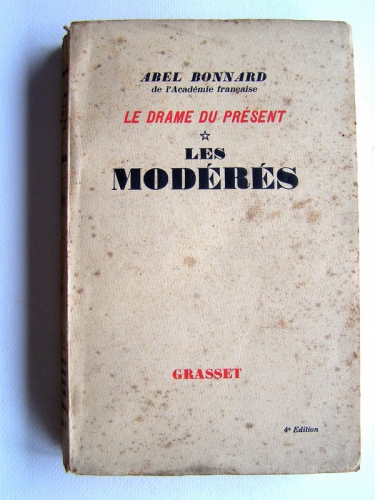 La France selon Abel Bonnard est une entité organique, y compris même (en fait : surtout) lorsqu'elle est démembrée : «La France ne se sera rendue vraiment apte à se donner une meilleure organisation que lorsqu'elle regardera le régime dont elle se plaint comme l'expression obscène des défauts qu'elle a accepté de garder sourdement en elle, et comme la place visible où s'avoue un mal profond» (1).
La France selon Abel Bonnard est une entité organique, y compris même (en fait : surtout) lorsqu'elle est démembrée : «La France ne se sera rendue vraiment apte à se donner une meilleure organisation que lorsqu'elle regardera le régime dont elle se plaint comme l'expression obscène des défauts qu'elle a accepté de garder sourdement en elle, et comme la place visible où s'avoue un mal profond» (1).
Ce mal profond, ce sont les mots, la grande passion française, qui vont le révéler, même s'il ne faut pas hésiter, comme Abel Bonnard le fait, à suspecter leur véracité et donc à procéder comme un écrivain véritable, en se réappropriant les mots usés, galvaudés, trahis : «L'éloquence des assemblées nous ment sur le drame où elle est mêlée. Elle compte beaucoup moins, en vérité, pour ce qu'elle exprime que pour ce qu'elle cache; elle étale l'emphatique sur l'inavouable et quand un discours ne sert pas à nous prouver que l'homme qui le prononce n'a rien pensé, il sert à nous cacher les arrière-pensées qu'il a eues» (p. 16).
Ainsi, si tous les grands mots ne sont présents que d'une façon spectrale, «comme des morts jetés sur une dalle; aucun n'avait sa vertu» (p. 17), le premier devoir de l'écrivain, Bonnard parlera du «premier réalisme», du moins en politique mais aussi en littérature, consiste donc à «connaître les démons qui sont cachés dans les mots» (p. 29).
Coupé des vieux mots rendus caducs, l'homme moderne n'est plus qu'une coquille vide, une outre remplie de vent et de mots devenus vieux, comme des acteurs sur le retour que l'on forcerait à se grimer pour indiquer des passions qu'ils n'éprouvent plus, s'ils les ont jamais éprouvées : «Ce qui caractérise une société ainsi faite, c'est qu'en isolant les hommes de la réalité, elle leur donne une juridiction verbale sur toutes les choses qu'ils ne touchent plus» (p. 109). Une outre remplie de vent, dans un monde qui n'est plus réel mais tout entier contaminé par un langage déprécié, vicié, tout juste bon à véhiculer quelques idées toutes faites et, puisque nous sommes en France, des causeries vaines, des jeux de mots et des traits d'esprit où se montre la vanité, le vide d'une époque sans racines : «Les conversations les plus brillantes sont des échanges où se glisse toujours un peu de fausse monnaie et le plaisir qu'elles causent ne serait pas si vif, si chacun ne s'y faisait pas illusion sur la valeur de ce qu'il dit. Au causeur souverain comme Rivarol, qui n'est qu'un penseur qui s'exerce, se joint aussitôt l'adroit manieur de mots pour qui avoir de l'esprit n'est que la plus brillante façon de ne pas comprendre; puis vient immédiatement le sot à facettes, que le sot sans facettes suit de très près» (p. 110). En somme, la France «est le pays où les défauts des salons sont descendus dans les rues», contribuant ainsi un peu plus à éloigner de la réalité le peuple, puisqu'il s'agit «pour chaque parleur de primer sur tous les autres» (p. 112), alors même que les «conversations mondaines n'ont que l'apparence d'un tournoi d'idées; ce sont des luttes de vanité», ce qui conduit Bonnard à poser cette évidence : «Parler, alors, devient un faux acte» puisque, quand «une opinion n'est pas tirée de l'expérience pour renvoyer à l'action, ce n'est plus qu'une aigrette que se met un individu» (p. 126).
Réfugiée dans la fausse parle analysée par Armand Robin, la France d'Abel Bonnard (et que dire de la nôtre !) est malade, peut-être même mourante bien que quelques indices, quelques lueurs, nous le verrons, nous laissent penser que son agonie, ô combien longue, n'est toutefois point totalement désespérée : «Ainsi des formes sociales aujourd'hui détruites nous encombrent encore des façons d'être qu'elles ont créées; ainsi quantité de Français nous paraissent tour à tour n'avoir pas l'âme assez forte pour agir dans le drame où ils sont jetés, et n'avoir pas l'esprit assez simple pour l'apercevoir. Cette impossibilité d'aller à l'important et au principal, cette curiosité volage pour toutes les idées qui n'est que l'incapacité d'en retenir fortement aucune, cette frivolité qui espère encore s'amuser des événements dont elle s'effraye, cette parodie de l'esprit de finesse qui donne une furieuse envie de retrouver l'esprit d'épaisseur, cette façon de faire la roue au bord de l'abîme, avant d'y tomber, cette rage de paraître jusqu'au moment où l'on disparaît, tous ces défauts, misérables parce qu'on y sent à la fois l'insuffisance de la personne et la suffisance de l'individu, ce sont, dans une nation que le destin somme de renaître, les dernières expressions d'une société qui meurt» (pp. 114-5).
Le Mal, selon Bonnard, pourrait bien porter le nom très antique de diable, d'obstacle, de division, de césure, celle qui, aux yeux de l'auteur, a constitué une véritable brèche dans l'histoire de la France, et a coupé, séparé, ce qui se tenait tant bien que mal : «C'est ainsi qu'Aristote et saint Thomas se répondent, que Cicéron pourrait converser avec Lavoisier, que les plus nobles des Croisés et des Musulmans se renvoient les mêmes rayons de chevalerie, qu'un jésuite français et un sage chinois, produits par deux mondes presque sans rapports, se trouvent néanmoins face à face sur le même plan. Ces fraternités involontaires, au bout d'efforts séparés, cette rencontre suprême de ceux qui ne se sont pas cherchés, voilà, sans doute, ce que notre espèce peut offrir de plus beau; si le mot d'humanité a un sens, c'est quand il tremble comme une lueur autour de cette réunion de quelques hommes» (p. 34).
 C'est la continuité de «la civilisation humaine» (p. 40) que la Révolution a brisée, alors que la royauté se faisait un devoir de la respecter : «Tels étaient les sentiments auxquels un Roi de France eût été obligé par sa fonction, alors même qu'il n'y aurait pas été porté par son caractère, dans une organisation où le pouvoir politique, bien loin de prétendre fixer lui-même les valeurs morales, se piquait au contraire d'honorer plus que personne celles qu'il n'avait pas établies» (pp. 38-9). Et Abel Bonnard d'illustrer par un long passage la vertu de l'Ancien Régime, chaîne ininterrompue de mérites, de bassesses et de médiocrités sans doute, mais surtout d'une vision verticale, capable de transcender les petites misères si bassement politiques qui forment la glu pourrie de notre époque : «Quand Harel, bonapartiste déclaré et qui, comme tel, avait âprement combattu la Restauration, brigua en 1829 la direction de l'Odéon, théâtre royal, on ne trouva pas de meilleur moyen de le recommander à Charles X que de faire valoir le dévouement qu'il avait montré pour l'Empereur tombé et Harel, en effet, eut son privilège. Quand Hyde de Neuville, en 1829, ministre du même roi, désire le faire revenir d'un choix qu'il a déjà fait, pour nommer à une place vacante l'officier de marine Bisson, il raconte au souverain la résolution et le courage que Bisson a montrés à Rochefort, en 1815, en offrant à Napoléon de lui faire percer la croisière anglaise, et cela décide Charles X. Tels étaient les sentiments, conclut Abel Bonnard, auxquels un Roi de France eût été obligé par sa fonction, alors même qu'il n'y aurait pas été porté par son caractère, dans une organisation où le pouvoir politique, bien loin de prétendre fixer lui-même les valeurs morales, se piquait au contraire d'honorer plus que personne celles qu'il n'avait pas établies» (pp. 38-9).
C'est la continuité de «la civilisation humaine» (p. 40) que la Révolution a brisée, alors que la royauté se faisait un devoir de la respecter : «Tels étaient les sentiments auxquels un Roi de France eût été obligé par sa fonction, alors même qu'il n'y aurait pas été porté par son caractère, dans une organisation où le pouvoir politique, bien loin de prétendre fixer lui-même les valeurs morales, se piquait au contraire d'honorer plus que personne celles qu'il n'avait pas établies» (pp. 38-9). Et Abel Bonnard d'illustrer par un long passage la vertu de l'Ancien Régime, chaîne ininterrompue de mérites, de bassesses et de médiocrités sans doute, mais surtout d'une vision verticale, capable de transcender les petites misères si bassement politiques qui forment la glu pourrie de notre époque : «Quand Harel, bonapartiste déclaré et qui, comme tel, avait âprement combattu la Restauration, brigua en 1829 la direction de l'Odéon, théâtre royal, on ne trouva pas de meilleur moyen de le recommander à Charles X que de faire valoir le dévouement qu'il avait montré pour l'Empereur tombé et Harel, en effet, eut son privilège. Quand Hyde de Neuville, en 1829, ministre du même roi, désire le faire revenir d'un choix qu'il a déjà fait, pour nommer à une place vacante l'officier de marine Bisson, il raconte au souverain la résolution et le courage que Bisson a montrés à Rochefort, en 1815, en offrant à Napoléon de lui faire percer la croisière anglaise, et cela décide Charles X. Tels étaient les sentiments, conclut Abel Bonnard, auxquels un Roi de France eût été obligé par sa fonction, alors même qu'il n'y aurait pas été porté par son caractère, dans une organisation où le pouvoir politique, bien loin de prétendre fixer lui-même les valeurs morales, se piquait au contraire d'honorer plus que personne celles qu'il n'avait pas établies» (pp. 38-9).
En somme, le Roi accepte de supporter le fardeau d'une charge qui ne devrait même pas lui incomber, puisque sa personne est le symbole et le garant d'une histoire dont il ne saurait désavouer la moindre seconde, alors que la Révolution, elle, ne peut rien assumer, puisqu'elle a prétendu tout refonder. De sorte que sa haine du passé ne peut jamais s'estimer rassasiée car, privée de légitimité, se sustentant seulement du sang de ses ennemis, il lui faut sans cesse en réinventer de nouveaux : «Ainsi cette Révolution n'est pas une chose faite une fois pour toutes, qui assure des droits égaux à tous les Français; c'est un drame qui se continue, l'effort d'un monde qui en veut remplacer un autre, et le misérable rallié, qui se croyait quitte, s'aperçoit qu'il ne se sera jamais suffisamment renié, tant qu'il ne se sera pas tout à fait détruit» (p. 57). Abel Bonnard condense sa pensée en une phrase ayant valeur de maxime, que n'eût sans doute point désavouée Joseph de Maistre : «À l'origine d'un régime d'égalité, il y a des droits établis; à l'origine d'un régime égalitaire, il y a des têtes coupées» (p. 61).
Car, s'il est vrai que la démocratie, consécration du régime égalitaire par opposition au régime d'égalité, «partout où elle est établie», finit par amener «l'abaissement de la personne humaine», alors que le régime égalitaire, lui, y tend «expressément dès l'abord» (p. 60), l'homme représentatif du présent, c'est-à-dire, aux yeux d'Abel Bonnard, le modéré qui est le sujet de son très beau livre, est en fin de compte «un homme rattrapé par le drame qu'il cherchait à fuir» (p. 54), un drame qui exige, nous l'avons vu, son anéantissement, mais aussi l'anéantissement de l'ensemble de ses représentations mentales et des mots qui sont chargés de les conceptualiser. La Révolution, si elle est un régicide, si elle représente le Régicide comme interruption brutale d'une Histoire de France plusieurs fois séculaire, est aussi, est d'abord peut-être un crime contre le langage de l'homme commun, au sens non péjoratif de l'adjectif : «Sans doute, dans ce régime dénaturé [qui est le nôtre], il arrive parfois que des hommes en place parlent sagement; ils s'émancipent jusqu'à citer un proverbe, ils osent rappeler une de ces vérités banales qui ont cessé de l'être dans un régime séparé du vrai : mais, contraires à l'esprit du système où elles sont prononcées, leurs paroles n'y résonnent pas, elles tombent à terre sans que nul les ait entendues, tandis que le moindre appel de démagogie retentit comme s'il passait par le clairon de l'archange» (pp. 62-3).
En somme, comme le savait Carlo Michelstaedter, les mots que toute démocratie utilise n'ont aucun poids, ils tournent à vide puisque le monde où ils ont grandi a cessé d'exister, et qu'ils ne sont plus capables, par leur fragilité et leur porosité, d'en faire jaillir un nouveau. Je ne sais si Renaud Camus a lu le livre d'Abel Bonnard, entre deux séances d'auto-contemplation repue, mais il est bien évident que le passage qui suit convient merveilleusement pour décrire le sens de son pitoyable combat pseudo-politique, puisque notre Narcisse devenu vieux se contrefiche du bien commun mais ne prétend servir, comme toujours, qu'une seule cause, la sienne, celle de son petit confort de châtelain jouant les seigneurs médiévaux : «La seule guerre à laquelle les jacobins ne puissent renoncer, c'est celle qu'ils font aux Français. La politique est essentiellement pour eux la guerre à l'intérieur. Il n'est pour s'en assurer que de lire les affiches électorales. Tout y respire la bataille : on n'y parle que d'armées, de camps, de drapeaux, d'assauts, de traîtres, de transfuges. Elles imposent à ceux qui les lisent l'obligation de la haine, et les ennemis qu'on désigne ainsi à chaque Français, c'est le Français d'à côté, ce sont des hommes enveloppés dans la communauté dont nous faisons partie, et pour lesquels nous ne devrions nous sentir qu'une présomption de bienveillance» (p. 64). Chacun de ces mots ou presque, enterre ou, hélas, devrait enterrer, les petites expectorations haineuses du Châtelain solipsiste, qui confond la res publica avec le diamètre, certes immense, de son nombril. Je ne m'attarderai pas davantage sur le cas, après tout banal, de notre Souchien dont l'irrédentisme catholique, opportunément apparu à une date récente, ne concerne toutefois que la seule dimension esthétique, la plus commode comme le savait Kierkegaard, du christianisme, sans avoir décoché une dernière flèche, encore empruntée au carquois d'Abel Bonnard, sur le bathmologue transi prenant la pose du nouveau saint Sébastien de la bien-pensance : «[...] on ne voit que trop de gens en qui la prostitution de l'âme a laissé intacte la virginité de l'intelligence» (p. 131). Notons que je n'ai aucun doute sur la qualité de l'âme de Renaud Camus, mes interrogations concernant plutôt son intelligence.
Quoi qu'il en soit, le régime républicain, essentiellement corrompu (2), selon Abel Bonnard, portera à tout jamais les marques de sa naissance : «Le malheur de la République est d'être née dans la haine : elle date du moment où la France s'est divisée. Elle ne pourra jamais devenir sincèrement un régime d'amitié; elle ne pourra jamais faire ce qui était si naturel à la monarchie, de prendre la France entière dans ses bras» (pp. 64-5).
Superbe expression, qui à mes yeux constitue sans aucun doute, avec celle de Georges Bernanos (de mémoire : un jeune homme à cheval qui n'a pas peur), la plus magnifique définition du génie de la royauté.
Que faire, face à un présent corrompu, duquel «l'honnête ouvrier du réel» (p. 87) est exclu, alors qu'un passé plus ou moins vivace continue, çà et là, comme des nappes résurgentes (3), à irriguer le désert du politico-théologique (une expression que Bonnard n'emploie jamais) ? La tentation conservatrice peut être une réponse. Voici de quelle belle façon Abel Bonnard définit les conservateurs : «Les conservateurs authentiques ne répugnent point par principe à tout changement, mais ils veulent maintenir dans le corps social une certaine âme, et ils sont par là les vrais poètes de la politique, au sens où le sentiment poétique achève et approfondit le sentiment du réel» (p. 79).
La réaction n'est pas loin, non plus, elle sera même évoquée quelques pages plus loin, tant le conservateur est aussi celui qui doit agir, comme l'indique cette magnifique flèche décochée dans le ventre mou du modéré: «Je rentrerai dans le passé par le raccourci que vous prenez pour le fuir» (p. 92).
Le réactionnaire se distingue essentiellement du modéré parce qu'il «nous est le reste et le témoin d'un temps antérieur au nôtre, où l'homme, au lieu de s'exprimer seulement dans des paroles et des opinions, s'imprimait dans des actes où il marquait toute sa nature» (p. 119). Et, dans un passage qu'il convient une fois de plus de citer intégralement, Abel Bonnard affirme du réactionnaire qu'il est «au bout d'un monde. Ce passé dont la plupart des Français sont si séparés qu'ils n'en conservent même plus l'idée, il y revient aisément, et par des sentiers à lui : une lecture l'y ramène, un objet, une rêverie; il rentre dans son pays par des cimetières. peut-être saisit-il mieux l'âme du monde auquel sa foi le garde attaché qu'au moment où, incorporée au réel, elle y contractait les imperfections de tout ce qui existe matériellement; à mesure qu'il perd les derniers avantages sociaux de sa condition, il est plus sûr qu'il n'y a rien d'égoïste dans ses convictions et les crevasses de son toit ne lui servent qu'à apercevoir ses étoiles. Pour les pensées et les sentiments, le réactionnaire vit dans une ruine, mais elle est à lui. Le modéré loge à l'auberge : il emprunte à n'importe qui des idées qu'il n'aura que pour un moment et il est plaisant d'observer que ces gens qui, jusqu'à ces derniers temps, ont été des hommes nantis, possédant hôtel, château ou villa, sont intellectuellement des vagabonds sans feu ni lieu» (p. 121).
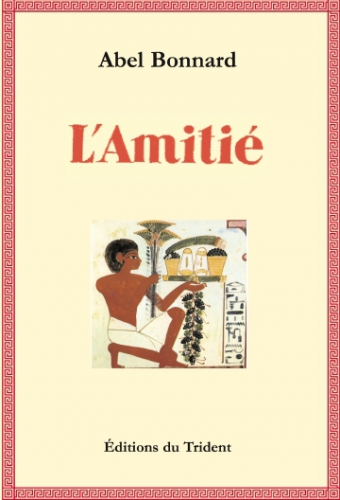 Toutefois, le salut réside peut-être, nous dit Bonnard, dans la présence, au sein d'une société devenue tout entière modérée, c'est-à-dire composée d'individus (belle défini comme étant «l'homme réduit par l'exigence de la vanité à l'indigence du Moi, aussi séparé de la modestie que de la grandeur», p. 248), de quelques réactionnaires, puisque certaines «âmes sont comme ces grains de blé toujours féconds que les archéologues trouvent dans les tombes de l'Égypte antique : elles se conservent dans le passé pour être semées dans l'avenir» (p. 122).
Toutefois, le salut réside peut-être, nous dit Bonnard, dans la présence, au sein d'une société devenue tout entière modérée, c'est-à-dire composée d'individus (belle défini comme étant «l'homme réduit par l'exigence de la vanité à l'indigence du Moi, aussi séparé de la modestie que de la grandeur», p. 248), de quelques réactionnaires, puisque certaines «âmes sont comme ces grains de blé toujours féconds que les archéologues trouvent dans les tombes de l'Égypte antique : elles se conservent dans le passé pour être semées dans l'avenir» (p. 122).
Mais ces graines, à condition de parier sur leur existence même, doivent pousser, et nous devons nous demander quel pourrait bien être l'engrais qui, dans le sol asséché de notre époque, pourrait les faire germer, puis grandir, car il n'y a rien, semble nous dire Abel Bonnard, depuis que les modérés ont modestement triomphé ou plutôt, c'est le rien qui a pris la place de quelque chose : «Une certaine faiblesse ne cesse de nous donner la nausée que pour nous donner le vertige, et au moment où nous croyons avoir le droit de la mépriser pour le peu qu'elle est, elle se défend de notre dédain par le prestige du néant» (p. 135). Bonnard va ainsi jusqu'à affirmer que les modérés sont «les femmes de la politique; ils souhaitent qu'on leur fasse une agréable violence» (p. 154)
Le langage, une fois de plus, est au cœur de la réflexion de Bonnard, puisqu'il ne cesse de fustiger celles et ceux qui ont prononcé «de grands mots qui n'avaient plus d'âme» (p. 138) ou encore qu'il note «l'inanité de certains discours, si vides qu'on n'y trouve même plus des erreurs» (p. 141), la France étant «le pays de l'émiettement» (p. 144) mais aussi celui où prospèrent les «conférences du brouillard et de la fumée», les «conciliabules du paon et du lièvre», les «dialogues des trembleurs et des importants» (pp. 144-5), le mal étant donc, selon toute apparence, sans recours, «lorsque les mots mêmes qui désignent les sentiments nobles par où l'on pourrait réagir contre ce système sont sans cesse souillés par une éloquence sans vergogne» (pp. 169-70). La consomption du langage est illustrée par cette image saisissante : «Cette interminable banderole de discours qui sort de la bouche des anciens libéraux se raccourcit à mesure qu'on approche des modérés d'aujourd'hui, et ceux-ci sont à présent si incertains et si déconfits que, nés pour être bavards, ils finissent par être muets» (p. 202).
Les esprits ou ce qu'il en reste sont donc prêts, semble nous dire l'auteur, pour être embrigadés et, sous la force, point le drame : «De ces intrigues, de ces menées, de ces turpitudes qui se protègent de notre examen par le dégoût même qu'elles nous inspirent, sortira l'événement qui ira frapper les familles heureuses autour de leur lampe et un poète solitaire auprès de la sienne», car, comme l'explique Abel Bonnard : «Lorsque l'élément dramatique qui n'est jamais absent de la politique cesse d'être inclus dans l'effort que des hommes supérieurs, ou au moins honnêtes, font pour maîtriser des difficultés toujours renouvelées, il ne se retire de l'agitation des individus que pour reparaître dans les circonstances qui les entourent et dans les menaces qui les surplombent. Plus la comédie politique s'avilit, plus le ciel noircit au-dessus d'elle, et quand elle est réduite à une farce qui ne fait rire que les étourdis, c'est alors que, sur cette bouffonnerie, on entend le grondement paresseux, langoureux, rêveur, le murmure presque pareil à un roucoulement du premier tonnerre» (pp. 150-1). Nous sommes en 1936 et, à vrai dire, ce n'est pas exactement le premier coup de tonner que les hommes de cette époque ont pu entendre : «Il n'est que trop aisé de mener des hommes à l'assaut de tout ce que l'homme a conquis sur la brutalité de sa propre nature; il suffit de mêler les idées folles aux passions sombres; il suffit de distribuer aux instincts le drapeau des grands mots : il suffit d'enrôler pêle-mêle les hommes de la haine et les hommes de la chimère, ceux qui ne se trompent pas sur ce qu'ils veulent détruire et ceux qui s'abusent sur ce qu'ils peuvent créer» (pp. 135-6).
Il nous reste peut-être quelque chance de nous sauver du naufrage. Tout d'abord, bien qu'il la comprenne, Abel Bonnard condamne la tentation de l'action révolutionnaire, qu'il peint ainsi : «Quand une société qui ne vit plus que par survivance se désagrège en hommes épars, qui ne sont sauvés de leur pauvreté intérieure par aucun rapport avec un fonds commun à tous, sans terroir, sans religion, sans disciplines, fonctionnaires ennuyés de leur emploi, artisans dépris de leur métier, ouvriers qui n'aiment plus leur besogne et qui ont, trop souvent, une besogne qu'ils ne peuvent pas aimer, comment ces individus désintégrés pourraient-ils essayer de revivre autrement que par des opinions révolutionnaires ? Comment le grain de poussière rentrerait-il dans le drame universel, sinon par la turbulence des vents ? (p. 175).
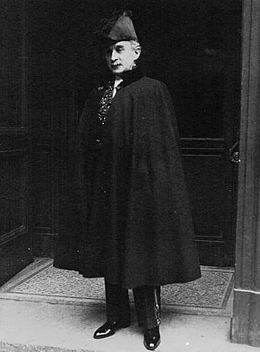 Toutefois, la Révolution, selon l'auteur, «est par essence incapable de procurer à ses partisans ni les plus hautes, ni les plus profondes des joies qu'on trouve dans l'amour de l'ordre, mais on s'expliquerait mal sa puissance, si l'on n'avait pas compris que, dans le monde décomposé d'aujourd'hui, elle dispense à ceux qu'elle asservit le rudiment informe et honteux des jouissances que l'ordre assure à ceux qui le servent. Les révolutionnaires appartiennent encore au désordre par la volupté de détruire, mais ils rentrent malgré eux dans l'ordre par le bonheur d'obéir» (pp. 177-8). Ainsi, les «révolutions sont les temps de l'humiliation de l'homme et les moments les plus matériels de l'histoire. Elles marquent moins la revanche des malheureux que celle des inférieurs. Ce sont des drames énormes dont les acteurs sont très petits» (p. 181), ce constat étant suivi de quelques portraits sans la moindre complaisance des révolutionnaires français les plus connus. Pourrait-on confier la destinée de la France à certains de ces hommes qui, «dans de grands postes et parfois avec des talents supérieurs, avaient, en servant la République, essayé malgré elle de servir l'État.» Suit alors une superbe évocation, que l'on dirait bernanosienne dans son rythme et sa cruauté assoupie, de ces personnages : «Certains de leurs propos me prouvaient qu'ils avaient fait la somme de leurs observations, et qu'ils jugeaient la démocratie pour ce qu'elle vaut. Mais ils ne parlaient ainsi devant moi que parce qu'ils étaient sûrs de ma discrétion, ou peut-être même, par moments, parce qu'ils oubliaient ma présence; j'écoutais alors, non sans une émotion singulière, ce murmure de toute une vie, pareil à la rumeur d'une ville, et où, dans le bourdonnement confus des réminiscences, sonnait parfois une vérité plus nette, comme, dans la vapeur sonore qui monte des toits, tinte le marteau d'un forgeron» (pp. 197-8).
Toutefois, la Révolution, selon l'auteur, «est par essence incapable de procurer à ses partisans ni les plus hautes, ni les plus profondes des joies qu'on trouve dans l'amour de l'ordre, mais on s'expliquerait mal sa puissance, si l'on n'avait pas compris que, dans le monde décomposé d'aujourd'hui, elle dispense à ceux qu'elle asservit le rudiment informe et honteux des jouissances que l'ordre assure à ceux qui le servent. Les révolutionnaires appartiennent encore au désordre par la volupté de détruire, mais ils rentrent malgré eux dans l'ordre par le bonheur d'obéir» (pp. 177-8). Ainsi, les «révolutions sont les temps de l'humiliation de l'homme et les moments les plus matériels de l'histoire. Elles marquent moins la revanche des malheureux que celle des inférieurs. Ce sont des drames énormes dont les acteurs sont très petits» (p. 181), ce constat étant suivi de quelques portraits sans la moindre complaisance des révolutionnaires français les plus connus. Pourrait-on confier la destinée de la France à certains de ces hommes qui, «dans de grands postes et parfois avec des talents supérieurs, avaient, en servant la République, essayé malgré elle de servir l'État.» Suit alors une superbe évocation, que l'on dirait bernanosienne dans son rythme et sa cruauté assoupie, de ces personnages : «Certains de leurs propos me prouvaient qu'ils avaient fait la somme de leurs observations, et qu'ils jugeaient la démocratie pour ce qu'elle vaut. Mais ils ne parlaient ainsi devant moi que parce qu'ils étaient sûrs de ma discrétion, ou peut-être même, par moments, parce qu'ils oubliaient ma présence; j'écoutais alors, non sans une émotion singulière, ce murmure de toute une vie, pareil à la rumeur d'une ville, et où, dans le bourdonnement confus des réminiscences, sonnait parfois une vérité plus nette, comme, dans la vapeur sonore qui monte des toits, tinte le marteau d'un forgeron» (pp. 197-8).
Un autre secours, qu'il ne faut pas négliger même s'il s'agit d'en indiquer les limites et les dangers, est celui d'un recours à la dictature. Je ne sais si Abel Bonnard a lu Donoso Cortès, mais il est évident qu'il a lu Joseph de Maistre : «Je manquerais à la haute idée que je me fais de l'Ordre, si je chantais ici la louange des dictatures. Elles ne peuvent être regardées que comme le remède très pénible d'un mal très profond, l'expression rudimentaire de l'ordre lorsqu'il s'oppose au chaos; elles se justifient surtout par ce qu'elles ont empêché et c'est précisément un des griefs les plus graves qu'on puisse faire à la démocratie, que de rendre nécessaire ce régime où elle se continue encore, quoiqu'il ait l'air de la démentir» (p. 280). Abel Bonnard évoque le personnage des dictateurs de la façon suivante : «S'il est très douteux qu'ils soient des grands hommes, il est très certains qu'ils sont éminemment des hommes; tout leur effort en fait foi, et cette valeur virile suffit à les mettre de mille coudées au-dessus des politiciens; ils n'ont pas fait leur carrière par des tricheries et des bassesses, mais par la lutte et par la prison, et ayant engagé toute leur personne dès leurs premiers actes, jamais ils ne l'ont exposée davantage que dans le poste suprême où ils sont des chefs pour être des cibles» (p. 281).
Pourrait-on espérer un secours de la part du langage, à condition qu'il ne soit pas utilisé frauduleusement et que l'on n'appelle pas ainsi le «cynisme de la fin» sagesse, la «fureur du milieu» énergie, et «l'étourderie du commencement générosité» (p. 207), à condition qu'il ne soit pas seulement l'apanage du seul «orateur politique, baryton des beaux sentiments, qui ne les exprime jamais avec plus de faste que lorsqu'il les éprouve à peine» (p. 223), et que, enfin, il ne s'écarte point de la réalité jusqu'à constituer une espèce de bulle malodorante et spécieuse sans le moindre rapport avec elle (cf. p. 211) ? Il n'y aura en tout cas «pas de postérité, Abel Bonnard nous l'assure, pour ceux qui ont laissé s'abîmer un monde, car ce que nous appelons de ce nom, ce n'est que notre civilisation qui dure après nous» (p. 212).
A contrario, le grand homme, lui, qu'il s'agisse de Napoléon ou du comte de Chambord, laisse une postérité bien lisible, indubitable, et jamais nous ne pourrions le considérer comme l'auteur de la phrase de Ledru-Rolin, involontairement comique : «Je suis leur chef, il faut que je les suive» (p. 217). Le grand homme, lui, comme «Napoléon passe au-dessus d'une époque dont il ne porte rien en soi comme la comète d'un Moi monstrueux qui entraîne dans sa queue tous les Moi minuscules d'une société désagrégée : il sort du gouffre des siècles, sans qu'on sache exactement duquel il revient, et entouré de signes fascinants qu'on a peine à lire et où l'on croit voir des cimeterres, des diadèmes, des sceptres qui sont encore des bâtons, il flamboie au-dessus de tous les parleurs, qu'il excite autant qu'il les a méprisés» (pp. 215-6). On croirait lire Léon Bloy lorsqu'il évoque le mystérieux et torve serviteur de Dieu que fut l'Empereur !
Les «grands hommes d'action sont des dons imprévus que le génie de l'humanité fait à son histoire», et Abel Bonnard d'affirmer que les grands hommes forment une espèce de communauté totalement à l'écart du reste des hommes : «leur âme ne nous renseigne pas mieux sur les sociétés d'où elle s'élève, que la cime des plus hautes montagnes sur les pays d'où elles se dégagent, et, au faîte du génie de Jules César, on ne se sent pas plus dans l'histoire romaine, qu'en parvenant au haut du Mont Blanc, on ne se souvient qu'on est en France; les sommets de l'homme, comme ceux de la Terre, échappent à leur enracinement local, et, d'où qu'ils surgissent, les mêmes qualités suprêmes miroitent doucement sur eux, comme sur les monts les plus hauts de l'Europe ou de l'Asie brillent les mêmes glaciers et les mêmes neiges» (pp. 213-4).
Les dernières pages des Modérés sont aussi remarquables et bien écrites (4) que le reste de l'ouvrage, qui évoquent aussi brillamment que méchamment la figure d'Adolphe Thiers comme contrepoint grotesque de celle de l'Empereur (cf. p. 254), moquent les prétentions de Hugo (cf. p. 230 et sq.) et plus généralement celles du romantisme (5), professent une nouvelle fois, devant l'évidence que «la République telle qu'elle est ne peut plus suffire aux circonstances où la France est placée» (p. 273), un amour et une admiration immodérés pour la royauté, ce modèle politico-social de cohérence maximale, «les deux extrémités d'une hiérarchie où tout se tenait» (p. 265) dont le faîte se trouvait dans la gloire et la base dans l'honneur, cette forme de poésie après tout, qui permet à cette dernière de s'implanter dans «l'ordre pratique», pouvant ainsi mettre «au-dessus d'un peuple un signe où il peut toujours rassembler son âme» (p. 261), les peuples ne se rattachant point par raison à la sagesse, «mais par un ensemble de traditions saintes, d'usages, de mœurs, où des sentiments plus hauts ou plus profonds que la raison voisinent avec un bon sens plus sûr qu'elle» (p. 257).
L'ennemie est la démocratie qui a tout avilit, et d'abord le rapport au réel des Français, les hommes, ce «printemps d'hommes» (p. 299) comme le dit magnifiquement l'auteur, étant «de ce régime où tout ment, et qui trompe autant qu'il se trompe, où tout est obscène sans que rien soit franc, où le mot de progrès désigne une décadence, où le mot de laïcité est l'étiquette d'une religion, et qui n'est jamais moins humain que lorsqu'il se targue de philanthropie; ils sentent que, s'il est inévitable que nous soyons sujets à l'erreur, il ne l'est pas que nous soyons ses sujets» (p. 300).
Il faut donc «marier de nouveau la France au réel; nous ne devons échapper à notre présent récent que pour nous retremper dans un passé antérieur, plus profond et plus nourricier, où nous redevenons des hommes complets en nous rattachant à des Français qui le furent. Une France est finie, il ne faut pas que la France le soit» (p. 296).
C'est par là, sans doute, cette rupture entre le monde réel et les politiciens, puis un peuple tout entier, que l'analyse d'Abel Bonnard est profonde, et rejoint du reste celle d'un Bernanos dans La Grande peur des bien-pensants, séparation jamais mieux instaurée, nous l'avons vu, que par la Révolution française, puisque la «fausse monnaie de l'esprit a précédé l'autre, et avant que le Français de la Révolution eût les poches bourrées de billets qui ne valaient rien, le Français du XVIIIe siècle a déjà pensé en assignats» (p. 293), la «France d'à présent [étant] au terme d'une phase de son histoire, qui a ses commencements visibles au XVIIIe siècle» (p. 292).
 Nous en sommes là, et force est d'admettre que la situation présente, dans ses grandes lignes du moins, n'a pas beaucoup changé, a même, sans doute, empiré, depuis l'époque où Abel Bonnard a écrit son pamphlet aussi juste et beau qu'implacable, droite et gauche confondues dans une même critique dont la hauteur et la puissance impressionnent : «Les circonstances où nous sommes auront paru vainement, si elles ne donnent pas lieu à une rentrée de l'homme. Les crises ne font jamais que nous sommer d'être nous-mêmes; les choses aboient autour de nous pour provoquer quelqu'un qui les dompte, et cette même clameur qui donne aux âmes lâches l'envie de s'enfuir donne aux âmes fortes celle de se montrer» (p. 290, je souligne).
Nous en sommes là, et force est d'admettre que la situation présente, dans ses grandes lignes du moins, n'a pas beaucoup changé, a même, sans doute, empiré, depuis l'époque où Abel Bonnard a écrit son pamphlet aussi juste et beau qu'implacable, droite et gauche confondues dans une même critique dont la hauteur et la puissance impressionnent : «Les circonstances où nous sommes auront paru vainement, si elles ne donnent pas lieu à une rentrée de l'homme. Les crises ne font jamais que nous sommer d'être nous-mêmes; les choses aboient autour de nous pour provoquer quelqu'un qui les dompte, et cette même clameur qui donne aux âmes lâches l'envie de s'enfuir donne aux âmes fortes celle de se montrer» (p. 290, je souligne).
Abel Bonnard se montre en tout cas confiant pour la suite des événements, car il «est fini, cet âge intermédiaire où chacun des Français pouvait encore jouir égoïstement d'un ordre qu'aucun d'eux ne travaillait plus à soutenir, où les démolisseurs eux-mêmes étaient logés dans le palais dont ils faisaient une ruine, où la Démocratie, héritière ingrate du Passé, vivait, en l'insultant tous les jours, des ressources qu'il lui avait laissées» (p. 289), alors même que «le régime parlementaire ne se perfectionne que pour s'isoler de toutes les questions qu'il devrait résoudre», et que le «politicien devient le parasite d'une société et d'une nation qu'il détruit ou laisse détruire; il vit de nous sans vivre pour nous et la démocratie à son comble offre ce contraste singulier, que tout le monde semble s'inquiéter du sort de l'État, et que personne ne s'en occupe : il y a de la politique partout, et il n'y a des politiques nulle part» (p. 285, je souligne).
Notre société, coupée du réel selon Abel Bonnard, ne donne plus que l'apparence de la force ou, tout simplement, de la vie, alors qu'elle n'est pas morte sans doute (selon l'auteur) mais mourante, comme il l'évoque dans ce passage qui se conclut par une image saisissante : «Nous n'aurons vraiment rien pu sur les lecteurs de ce livre, si nous ne les laissons pas persuadés que la violence des opinions n'est aujourd'hui, chez nous, dans l'immense pluralité des cas, que le dernier degré de l'abandonnement, et le dévergondage de l'impuissance. Il suffirait, pour s'en convaincre, de regarder ces manifestations révolutionnaires où des foules à la fois molles et haineuses portent sur leurs flots un député d'extrême-gauche, resté malgré lui petit bourgeois, comme les inondations charrient un fauteur Voltaire» (pp. 282-3).
Il faut agir car, pendant que «les esprits reviennent au vrai en charrette, les événements arrivent sur nous en rapide, et si nous ne sommes pas prêts avant qu'ils soient là, et qu'ils ne trouvent pas des hommes capables de les dominer, il importera assez eu que le soleil de l'irréparable se lève sur des cerveaux qui étaient paresseusement en train de guérir» (p. 305).
Il faut agir, en fondant l'action sur des opinions fortes qui, nous dit l'auteur, ne sont pas des opinions violentes, celles-ci s'en prenant à des hommes, celles-là remontant à des causes (cf. p. 310), il faut agir, en remettant à l'honneur la «recherche de la vérité [qui] est une fête par elle-même, de quelque peine que les résultats où elle nous mène puissent affliger notre cœur» car, «toutes les fois que l'incandescence de la pensée se ternit d'une couleur, c'est qu'un des sentiments de l'individu s'est insinué indûment dans une activité qui ne s'accomplit que si elle les ignore» (p. 317).
Il faut agir, car la «crise est si tragique et si décisive que les tombeaux eux-mêmes s'intéressent pour son issue, le fantôme de César erre par toute l'Europe, comme celui de Gengis-Khan passe dans les horizons de l'Asie, et sans doute les morts obscurs reviennent aussi, si bien que tel Français ordinaire qui, hier, pérorait selon la rhétorique inepte d'un parti, sent tout à coup la pression humble et puissante de tous ceux dont il est sorti, qui lui demandent d'avoir plus de raison qu'il n'y a de confusion dans les choses, et plus d'âme qu'il n'y a de matière en elles» (pp. 322-3).
Il faut agir et, pour agir, l'homme doit se tourner ou plutôt se retourner vers l'esprit, «car l'action ne peut se chercher de sources qu'au-dessus d'elle» (p. 323).
Il faut agir, en retrouvant le sens d'une action qui serait incarnée dans et par un homme, et non un individu qui «partout ne s'abîme que pour transmettre l'âpreté de son Moi minuscule au Moi énorme des nations» (p. 324).
Je conclurai cette note trop longue et pourtant si imparfaite par les dernières lignes d'Abel Bonnard, en souhaitant que ses Immodérés soient réédités par une véritable maison d'édition (Grasset, par exemple ?) plutôt que par le plaisantin Alain Soral : «On peut dire que c'est là le monde de la force et cependant c'est surtout celui de la faiblesse, car toutes les forces qu'on y voit titubent à la recherche d'une âme; on peut dire que c'est le monde des passions, et c'est d'abord celui de la peur, présente dans le cœur même de ceux qui prétendent l'inspirer, tant les chefs et les nations s'effrayent de ne pas savoir où ils vont et d'être forcés d'aller. Ces machines contre lesquelles l'homme doit lutter, à la fin d'une époque immense, comme Hercule, au commencement, dut lutter contre les monstres, ces usines aussi funestes à l'homme dans leur prospérité que dans leur détresse, dragons qui noircissent le ciel de leur fumée, quand ils sont vivants, et qui, lorsqu'ils sont morts, empoisonnent la terre de leur corruption, ces villes qui ne sont devenues énormes que pour être des cibles qu'aucun projectile ne pourra manquer, ces capitales qui tentent l'incendie avec leurs musées trop pleins et qui ne semblent avoir rassemblé le trésor de l'homme que pour l'offrir à la destruction, ces peuples qui se tournent insensiblement en armées, ces foules effilochées de France, ces foules plus denses d'Italie, ces foules carrées d'Allemagne, durcies en bataillons, pareilles à des pièces d'échecs prêtes à êtres poussées sur un échiquier, ce ciel noir aux trouées livides, au fond duquel s'enfuient comme des ramiers nos derniers plaisirs, et d'où les astres eux-mêmes épanchent leurs influences sur l'agitation des hommes, tout cela nous présente le spectacle d'un jour dont nous ne savons pas la saison, car rien ne ressemble aux troubles où naît le printemps comme les tumultes où meurt l'automne. Cependant ce monde informe, limoneux, diluvien, ce n'est que le terrain de chasse de l'Esprit» (pp. 325-6). Notes
(1) Abel Bonnard, Le drame du présent. Les Modérés (Grasset, 1936), p. 12.
(2) «En un mot, lorsque la meilleure partie de la nation a laissé se faire des régimes qu'elle n'a pas faits, ou elle s'étiole en refusant de les servir, ou elle se dégrade si elle les sert» (p. 77).
(3) Je cite in extenso ce magnifique passage : «Il n'est que trop aisé de montrer par quels sentiments la France n'a plus voulu être royaliste; mais il faudrait une touche plus fluide et plus délicate pour marquer par combien d'endroits elle est demeurée royale : il lui est arrivé le plus triste malheur dont une grande nation puisse être frappée : en l'excitant à se méconnaître, on a fait d'elle un pays interrompu, un peuple acharné contre soi; mais ce passé dont on l'a séparée par un énorme barrage, s'il ne coule plus dans le présent avec opulence, y suinte et s'y insinue cependant par mille infiltrations secrètes; ce domestique qui ne croit pas nécessaire d'opposer son âme aux maîtres qu'il sert, cet artisan qui ose encore s'appliquer à sa besogne, ce cuisinier qui fait commencer son art dans l'excellence des denrées, pour l'achever dans la succulence des plats, ce libraire qui ne s'interdit pas de glisser un regard curieux dans les vieux livres qu'il vend, ces deux lettrés qui se promènent à l'automne sur le mail, en foulant des feuilles mortes précieuses et vaines comme les sages pensées qu'ils échangent, participent encore d'un autre monde, même à leur insu : il y a parmi eu des aristocrates obscurs, et jusqu'à des princes cachés» (p. 98).
(4) La simplicité des moyens dont use Bonnard, parfois abuse il est vrai, est confondante, puisqu'il se contente d'insuffler à ses phrases un balancement binaire, dont l'effet de contraste est souvent réussi tel que : «Il ne peut nous éloigner de lui par ce qu'il affecte, qu'il ne nous ramène à lui par ce qu'il est» (p. 230) ou «Dès qu'il ne s'agissait plus d'être fort dans la mesure où l'on se commande, il ne resta qu'à le paraître dans la mesure où l'on s'abandonne» (p. 180).
(5) «Mais l'ampleur du spectacle ne doit pas nous tromper sur sa nature. Rien ne fait tableau comme la chute et la ruine éblouissante d'un grand fleuve, et ce grondement de discours, ces arcs-en-ciel de poèmes, ces feux des idées trempés dans les gouttelettes des mots, ce n'est pourtant que l'Homme qui tombe» (p. 240).
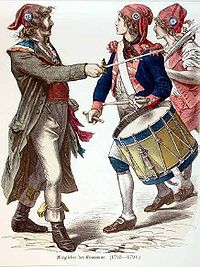 Ceux-ci, dans le sillage de Sieyès, vont très vite s’affirmer « représentants de la nation ». Cela est faux : juridiquement et statutairement ils ne représentent pas la « nation » mais l’Ordre qui les a élus (la Noblesse, le Clergé ou le Tiers Etat). De fait, les trois Ordres délibèrent séparément et chaque député vote au sein de son Ordre. Celui qui représente la nation, qui incarne le Royaume, c’est le Roi (théorie des deux corps : le Royaume est un corps mystique incarné par le corps du Roi). Cependant le 15 juin, passant outre, les députés décident illégalement de la délibération en commun et du vote par tête. Le 17 juin, ils se constituent même, tout aussi illégalement, en « Assemblée nationale ». Leur objectif ? : marquer, au nom du peuple français qu’ils disent représenter, leur prééminence sur le Roi, affirmer que ce n’est plus le monarque qui incarne le Royaume mais la « représentation nationale ». Dès lors, les députés de l’Assemblée captent la légitimité pour légiférer et gouverner en lieu et place du Roi. Il s’agit véritablement d’une prise illégale de pouvoir, le corps de l’Assemblée remplaçant celui du Roi à la tête du Royaume.
Ceux-ci, dans le sillage de Sieyès, vont très vite s’affirmer « représentants de la nation ». Cela est faux : juridiquement et statutairement ils ne représentent pas la « nation » mais l’Ordre qui les a élus (la Noblesse, le Clergé ou le Tiers Etat). De fait, les trois Ordres délibèrent séparément et chaque député vote au sein de son Ordre. Celui qui représente la nation, qui incarne le Royaume, c’est le Roi (théorie des deux corps : le Royaume est un corps mystique incarné par le corps du Roi). Cependant le 15 juin, passant outre, les députés décident illégalement de la délibération en commun et du vote par tête. Le 17 juin, ils se constituent même, tout aussi illégalement, en « Assemblée nationale ». Leur objectif ? : marquer, au nom du peuple français qu’ils disent représenter, leur prééminence sur le Roi, affirmer que ce n’est plus le monarque qui incarne le Royaume mais la « représentation nationale ». Dès lors, les députés de l’Assemblée captent la légitimité pour légiférer et gouverner en lieu et place du Roi. Il s’agit véritablement d’une prise illégale de pouvoir, le corps de l’Assemblée remplaçant celui du Roi à la tête du Royaume.


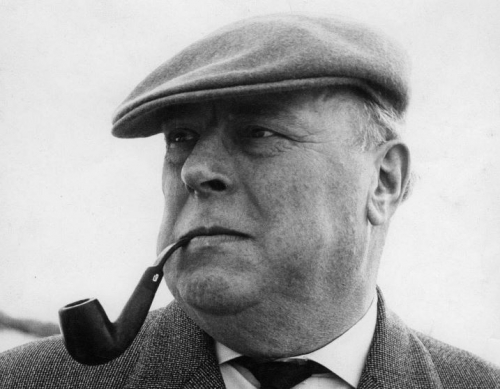
 L’architecture générale du livre s’appuie sur les quelques 130 questions auxquelles les Américains demandèrent aux Allemands de répondre en 1945 afin d’organiser la dénazification du pays, mais en les détournant souvent et prenant à de nombreuses reprises le contre-pied des attentes des vainqueurs. A bien des égards, le livre est ainsi non seulement à contre-courant de la doxa habituelle, mais camoufle également bien des aspects d’une réalité que l’Allemagne de la fin des années 1940 refusait de reconnaître : « Ma conscience devenue très sensible me fait craindre de participer à un acte capable, dans ces circonstances incontrôlables, de nuire sur l’ordre de puissances étrangères à un pays et à un peuple dont je suis irrévocablement ». Certaines questions font l’objet de longs développements, mais presque systématiquement un humour grinçant y est présent, comme lorsqu’il s’agit simplement d’indiquer son lieu de naissance : « Je découvre avec étonnement que, grâce à mon lieu de naissance (Kiel), je peux me considérer comme un homme nordique, et l’idée qu’en comparaison avec ma situation les New-Yorkais doivent passer pour des Méridionaux pleins de tempérament m’amuse beaucoup ». Et à la même question, à propos des manifestations des SA dans la ville avant la prise du pouvoir par les nazis : « Certes, la couleur de leurs uniformes était affreuse, mais on ne regarde pas l’habit d’un homme, on regarde son coeur. On ne savait pas au juste ce que ces gens-là voulaient. Du moins semblaient-ils le vouloir avec fermeté … Ils avaient de l’élan, on était bien obligé de le reconnaître, et ils étaient merveilleusement organisés. Voilà ce qu’il nous fallait : élan et organisation ». Au fil des pages, il revient à plusieurs reprises sur son attachement à la Prusse traditionnelle, retrace l’histoire de sa famille, développe ses relations compliquées avec les religions et les Eglises, évoque des liens avec de nombreuses personnes juives (dont sa femme), donne de longues précisions sur ses motivations à l’époque de l’assassinat de Rathenau, sur son procès ultérieur et sur son séjour en prison. Suivant le fil des questions posées, il détaille son éducation, son cursus scolaire, son engagement dans les mouvements subversifs « secrets », retrace ses activités professionnelles successives avec un détachement qui parfois peu surprendre mais correspond à l’humour un peu grinçant qui irrigue le texte, comme lorsqu’il parle de son éditeur et ami Rowohlt. Il revient bien sûr longuement sur les corps francs entre 1919 et 1923, sur l’impossibilité à laquelle il se heurte au début de la Seconde guerre mondiale pour faire accepter son engagement volontaire, tout en racontant qu’il avait obtenu en 1919 la plus haute de ses neuf décorations en ayant rapporté à son commandant… « un pot de crème fraîche. Il avait tellement envie de manger un poulet à la crème ! ». Toujours ce côté décalé, ce deuxième degré que les Américains n’ont probablement pas compris. La première rencontre avec Hitler, le putsch de 1923, la place des élites bavaroises et leurs rapports avec l’armée de von Seeckt, la propagande électorale à la fin des années 1920, et après l’arrivée au pouvoir du NSDAP les actions (et les doutes) des associations d’anciens combattants et de la SA, sont autant de thèmes abordés au fil des pages, toujours en se présentant et en montrant la situation de l’époque avec détachement, presque éloignement, tout en étant semble-t-il hostile sur le fond et désabusé dans la forme. Les propos qu’il tient au sujet de la nuit des longs couteaux sont parfois étonnants, mais finalement « dans ces circonstances, chaque acte est un crime, la seule chose qui nous reste est l’inaction. C’est en tout cas la seule attitude décente ». Ce n’est finalement qu’en 1944 qu’il lui est demandé de prêter serment au Führer dans le cadre de la montée en puissance du Volkssturm, mais « l’homme qui me demandait le serment exigeait de moi que je défende la patrie. Mais je savais que ce même homme jugeait le peuple allemand indigne de survivre à sa défaite ». Conclusion : défendre la patrie « ne pouvait signifier autre chose que de la préserver de la destruction ». Toujours les paradoxes. Dans la dernière partie, le comportement des Américains vainqueurs est souvent présenté de manière négative, évoque les difficultés quotidiennes dans son petit village de haute Bavière : une façon de presque renvoyer dos-à-dos imbécilité nazie et bêtise alliée… et donc de s’exonérer soi-même.
L’architecture générale du livre s’appuie sur les quelques 130 questions auxquelles les Américains demandèrent aux Allemands de répondre en 1945 afin d’organiser la dénazification du pays, mais en les détournant souvent et prenant à de nombreuses reprises le contre-pied des attentes des vainqueurs. A bien des égards, le livre est ainsi non seulement à contre-courant de la doxa habituelle, mais camoufle également bien des aspects d’une réalité que l’Allemagne de la fin des années 1940 refusait de reconnaître : « Ma conscience devenue très sensible me fait craindre de participer à un acte capable, dans ces circonstances incontrôlables, de nuire sur l’ordre de puissances étrangères à un pays et à un peuple dont je suis irrévocablement ». Certaines questions font l’objet de longs développements, mais presque systématiquement un humour grinçant y est présent, comme lorsqu’il s’agit simplement d’indiquer son lieu de naissance : « Je découvre avec étonnement que, grâce à mon lieu de naissance (Kiel), je peux me considérer comme un homme nordique, et l’idée qu’en comparaison avec ma situation les New-Yorkais doivent passer pour des Méridionaux pleins de tempérament m’amuse beaucoup ». Et à la même question, à propos des manifestations des SA dans la ville avant la prise du pouvoir par les nazis : « Certes, la couleur de leurs uniformes était affreuse, mais on ne regarde pas l’habit d’un homme, on regarde son coeur. On ne savait pas au juste ce que ces gens-là voulaient. Du moins semblaient-ils le vouloir avec fermeté … Ils avaient de l’élan, on était bien obligé de le reconnaître, et ils étaient merveilleusement organisés. Voilà ce qu’il nous fallait : élan et organisation ». Au fil des pages, il revient à plusieurs reprises sur son attachement à la Prusse traditionnelle, retrace l’histoire de sa famille, développe ses relations compliquées avec les religions et les Eglises, évoque des liens avec de nombreuses personnes juives (dont sa femme), donne de longues précisions sur ses motivations à l’époque de l’assassinat de Rathenau, sur son procès ultérieur et sur son séjour en prison. Suivant le fil des questions posées, il détaille son éducation, son cursus scolaire, son engagement dans les mouvements subversifs « secrets », retrace ses activités professionnelles successives avec un détachement qui parfois peu surprendre mais correspond à l’humour un peu grinçant qui irrigue le texte, comme lorsqu’il parle de son éditeur et ami Rowohlt. Il revient bien sûr longuement sur les corps francs entre 1919 et 1923, sur l’impossibilité à laquelle il se heurte au début de la Seconde guerre mondiale pour faire accepter son engagement volontaire, tout en racontant qu’il avait obtenu en 1919 la plus haute de ses neuf décorations en ayant rapporté à son commandant… « un pot de crème fraîche. Il avait tellement envie de manger un poulet à la crème ! ». Toujours ce côté décalé, ce deuxième degré que les Américains n’ont probablement pas compris. La première rencontre avec Hitler, le putsch de 1923, la place des élites bavaroises et leurs rapports avec l’armée de von Seeckt, la propagande électorale à la fin des années 1920, et après l’arrivée au pouvoir du NSDAP les actions (et les doutes) des associations d’anciens combattants et de la SA, sont autant de thèmes abordés au fil des pages, toujours en se présentant et en montrant la situation de l’époque avec détachement, presque éloignement, tout en étant semble-t-il hostile sur le fond et désabusé dans la forme. Les propos qu’il tient au sujet de la nuit des longs couteaux sont parfois étonnants, mais finalement « dans ces circonstances, chaque acte est un crime, la seule chose qui nous reste est l’inaction. C’est en tout cas la seule attitude décente ». Ce n’est finalement qu’en 1944 qu’il lui est demandé de prêter serment au Führer dans le cadre de la montée en puissance du Volkssturm, mais « l’homme qui me demandait le serment exigeait de moi que je défende la patrie. Mais je savais que ce même homme jugeait le peuple allemand indigne de survivre à sa défaite ». Conclusion : défendre la patrie « ne pouvait signifier autre chose que de la préserver de la destruction ». Toujours les paradoxes. Dans la dernière partie, le comportement des Américains vainqueurs est souvent présenté de manière négative, évoque les difficultés quotidiennes dans son petit village de haute Bavière : une façon de presque renvoyer dos-à-dos imbécilité nazie et bêtise alliée… et donc de s’exonérer soi-même.
 del.icio.us
del.icio.us
 Digg
Digg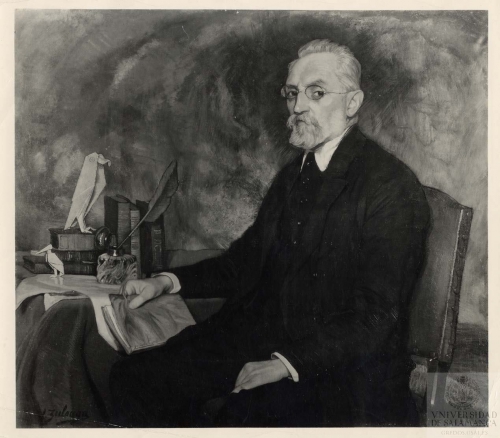



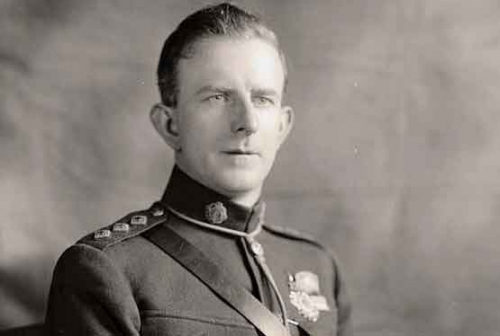



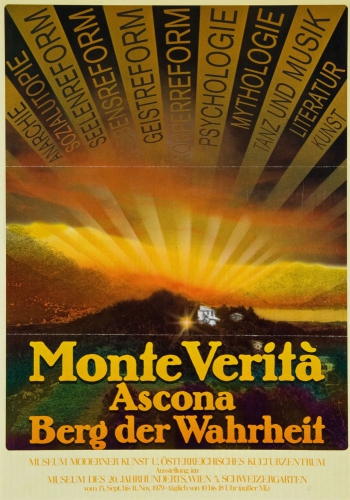 Le choc de la Grande Guerre devait anéantir ses tentatives alternatives, mais d’autres devaient naitre sur les ruines de notre continent. L’expérience révolutionnaire et poétique de Fiume en 1917 sera une autre forme de cette recherche d’une communauté idéale. Mais cela est déjà une autre histoire.
Le choc de la Grande Guerre devait anéantir ses tentatives alternatives, mais d’autres devaient naitre sur les ruines de notre continent. L’expérience révolutionnaire et poétique de Fiume en 1917 sera une autre forme de cette recherche d’une communauté idéale. Mais cela est déjà une autre histoire.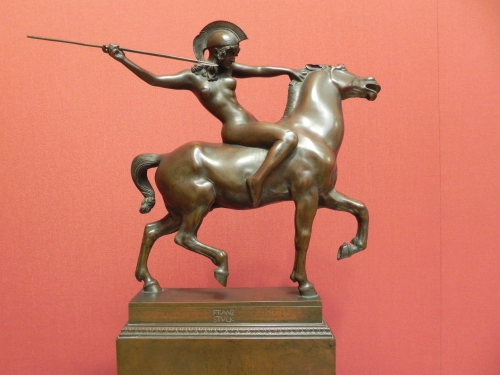
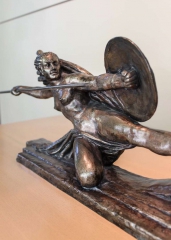 Qui se cache derrière les légendaires Amazones ? Quelles preuves archéologiques avons-nous de l'existence de femmes guerrières chez les anciens nomades de la steppe ? Qui sont leurs héritières ? Pour "Les Hommes aux semelles de vent", l'historien Iaroslav Lebedynsky démêle mythe et réalité.
Qui se cache derrière les légendaires Amazones ? Quelles preuves archéologiques avons-nous de l'existence de femmes guerrières chez les anciens nomades de la steppe ? Qui sont leurs héritières ? Pour "Les Hommes aux semelles de vent", l'historien Iaroslav Lebedynsky démêle mythe et réalité.

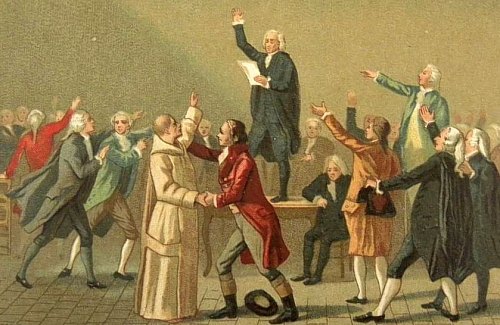

 Les Réprouvés s’ouvre sur une citation de Franz Schauweker : « Dans la vie, le sang et la connaissance doivent coïncider. Alors surgit l’esprit. » Là est toute la leçon de l’œuvre, qui oppose connaissance et expérience et finit par découvrir que ces deux opposés s’attirent inévitablement. Une question se pose alors : faut-il laisser ces deux attractions s’annuler, se percuter, se détruire et avec elles celui qui les éprouve ; ou bien faut-il résoudre la tension dans la création et la réflexion.
Les Réprouvés s’ouvre sur une citation de Franz Schauweker : « Dans la vie, le sang et la connaissance doivent coïncider. Alors surgit l’esprit. » Là est toute la leçon de l’œuvre, qui oppose connaissance et expérience et finit par découvrir que ces deux opposés s’attirent inévitablement. Une question se pose alors : faut-il laisser ces deux attractions s’annuler, se percuter, se détruire et avec elles celui qui les éprouve ; ou bien faut-il résoudre la tension dans la création et la réflexion.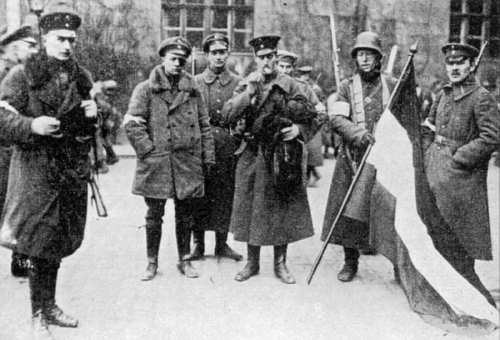
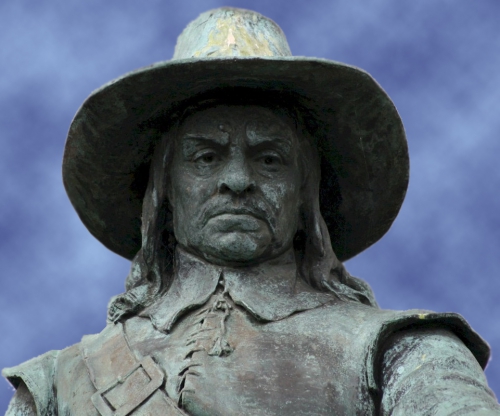

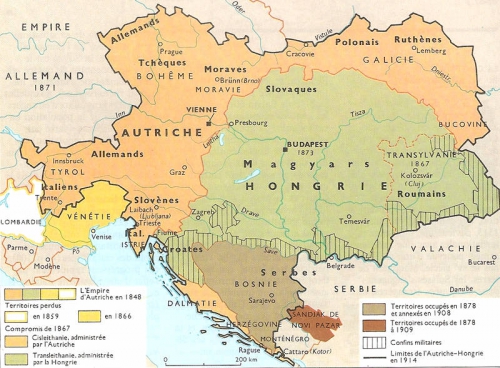
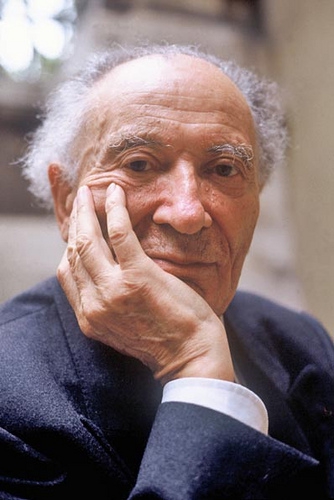 Alors que l’Europe civilisationnelle meurt jour après jour devant nous, sous les coups de boutoir conjugués du modernisme, du mondialisme et du consumérisme, il demeure fondamental de comprendre l’histoire de notre continent, si nous voulons encore croire à un avenir digne de ce nom… À ce titre j’ai récemment découvert, au gré de mes recherches, une petite merveille intellectuelle qui décrypte avec faits, objectifs et arguments circonstanciés, la mort programmée de l’Autriche-Hongrie. Cette dernière reste couramment mais improprement appelée Empire austro-hongrois, alors que son nom exact devrait être Double Monarchie austro-hongroise.
Alors que l’Europe civilisationnelle meurt jour après jour devant nous, sous les coups de boutoir conjugués du modernisme, du mondialisme et du consumérisme, il demeure fondamental de comprendre l’histoire de notre continent, si nous voulons encore croire à un avenir digne de ce nom… À ce titre j’ai récemment découvert, au gré de mes recherches, une petite merveille intellectuelle qui décrypte avec faits, objectifs et arguments circonstanciés, la mort programmée de l’Autriche-Hongrie. Cette dernière reste couramment mais improprement appelée Empire austro-hongrois, alors que son nom exact devrait être Double Monarchie austro-hongroise.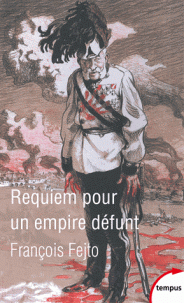 Effectivement avant la Grande Guerre, l’Empire jouait un rôle stabilisateur en Europe centrale, comme nous l’avons malheureusement appris à nos dépends depuis son homicide : Deuxième Guerre mondiale, agitations et instabilités politiques chroniques dans cette zone géographique, guerres ethnico-religieuses dans les années 90, etc. Nous citons également le texte introductif de Joseph Roth qui figure dans l’avant-propos, démontrant la cohésion des peuples derrière leur souverain légitime : « Dans cette Europe insensée des États-nations et des nationalismes, les choses les plus naturelles apparaissent comme extravagantes. Par exemple, le fait que des Slovaques, des Polonais et des Ruthènes de Galicie, des juifs encafetanés de Boryslaw, des maquignons de la Bácska, des musulmans de Sarajevo, des vendeurs de marrons grillés de Mostar se mettent à chanter à l’unisson le Gott erhalte (2) le 18 août, jour anniversaire de François-Joseph, à cela, pour nous, il n’y a rien de singulier (3). » Il n’est guère étonnant que les babéliens d’hier et d’aujourd’hui, pourfendeurs des frontières et des identités, ne comprennent pas la nature réelle et profonde de ce cosmopolitisme chrétien et monarchique qui heurte leurs convictions maçonniques…
Effectivement avant la Grande Guerre, l’Empire jouait un rôle stabilisateur en Europe centrale, comme nous l’avons malheureusement appris à nos dépends depuis son homicide : Deuxième Guerre mondiale, agitations et instabilités politiques chroniques dans cette zone géographique, guerres ethnico-religieuses dans les années 90, etc. Nous citons également le texte introductif de Joseph Roth qui figure dans l’avant-propos, démontrant la cohésion des peuples derrière leur souverain légitime : « Dans cette Europe insensée des États-nations et des nationalismes, les choses les plus naturelles apparaissent comme extravagantes. Par exemple, le fait que des Slovaques, des Polonais et des Ruthènes de Galicie, des juifs encafetanés de Boryslaw, des maquignons de la Bácska, des musulmans de Sarajevo, des vendeurs de marrons grillés de Mostar se mettent à chanter à l’unisson le Gott erhalte (2) le 18 août, jour anniversaire de François-Joseph, à cela, pour nous, il n’y a rien de singulier (3). » Il n’est guère étonnant que les babéliens d’hier et d’aujourd’hui, pourfendeurs des frontières et des identités, ne comprennent pas la nature réelle et profonde de ce cosmopolitisme chrétien et monarchique qui heurte leurs convictions maçonniques…

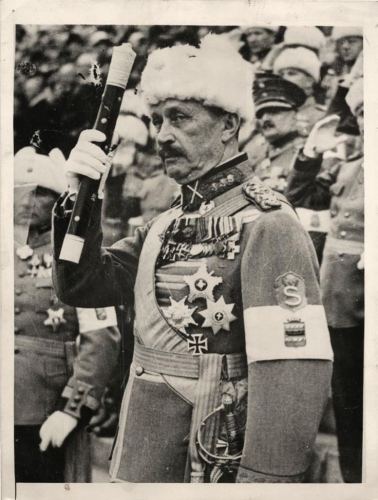

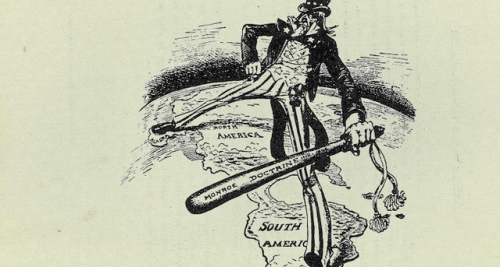

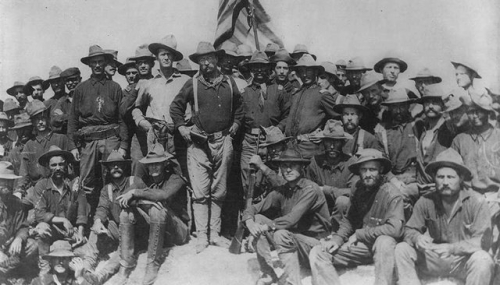

 Le général Smedley Butler, auteur du livre "War is a Racket"
Le général Smedley Butler, auteur du livre "War is a Racket"
 En France, l’identité politique des historiens de la Révolution est toujours passée au crible et leurs conclusions soupçonnées d’être biaisées par un parti pris idéologique. La polémique récente,
En France, l’identité politique des historiens de la Révolution est toujours passée au crible et leurs conclusions soupçonnées d’être biaisées par un parti pris idéologique. La polémique récente, 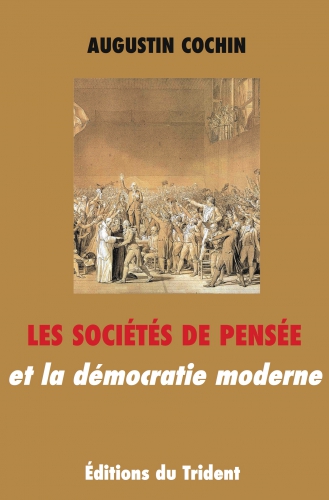 Ces idées communes incarnent ce qu’il nomme « la libre pensée ». Cochin dénonce la logique nihiliste de cette esprit né des idéaux philosophiques des Lumières qui tend à déraciner les hommes en les coupant de leurs attaches traditionnelles. Elle s’attaque violemment à l’ordre ancien sans lui proposer d’alternative. Cette philosophie fondée sur un idéal d’égalité entre les individus représente pour lui une abstraction dangereuse. Quand l’ancienne société était organique, composée d’ordres et d’états, la nouvelle société jacobine, dont on voit l’avènement sous la Révolution, est caractérisée par « l’anomie ». Le peuple devient un composé « d’atomes politiques » désorganisé et affaibli. L’historien Gérard Grunberg explique : « Pour Cochin, la Révolution est davantage l’avènement d’un nouveau type de socialisation qu’une bataille sociale ou un transfert de propriété. Elle est discours plus qu’action. » Ce phénomène se concrétise en 1789, mais il est, pour Cochin, l’aboutissement d’un travail de sape amorcé autour des années 1750. « Avant la Terreur sanglante de 93, il y eut, de 1765 à 1780, dans la république des lettres, une terreur sèche, dont l’Encyclopédie fut le comité de salut public, et d’Alembert le Robespierre. » L’enjeu de ses recherches est ainsi de montrer la passerelle entre ce pouvoir intellectuel et le pouvoir politique.
Ces idées communes incarnent ce qu’il nomme « la libre pensée ». Cochin dénonce la logique nihiliste de cette esprit né des idéaux philosophiques des Lumières qui tend à déraciner les hommes en les coupant de leurs attaches traditionnelles. Elle s’attaque violemment à l’ordre ancien sans lui proposer d’alternative. Cette philosophie fondée sur un idéal d’égalité entre les individus représente pour lui une abstraction dangereuse. Quand l’ancienne société était organique, composée d’ordres et d’états, la nouvelle société jacobine, dont on voit l’avènement sous la Révolution, est caractérisée par « l’anomie ». Le peuple devient un composé « d’atomes politiques » désorganisé et affaibli. L’historien Gérard Grunberg explique : « Pour Cochin, la Révolution est davantage l’avènement d’un nouveau type de socialisation qu’une bataille sociale ou un transfert de propriété. Elle est discours plus qu’action. » Ce phénomène se concrétise en 1789, mais il est, pour Cochin, l’aboutissement d’un travail de sape amorcé autour des années 1750. « Avant la Terreur sanglante de 93, il y eut, de 1765 à 1780, dans la république des lettres, une terreur sèche, dont l’Encyclopédie fut le comité de salut public, et d’Alembert le Robespierre. » L’enjeu de ses recherches est ainsi de montrer la passerelle entre ce pouvoir intellectuel et le pouvoir politique.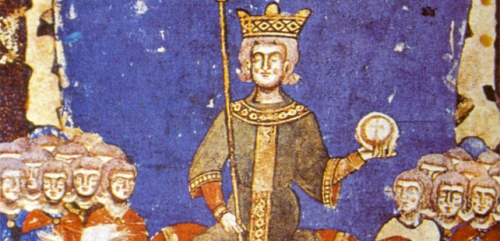
 L’empereur Frédéric II est, comme le rappelle à plusieurs reprises l’auteur, l’un des derniers, dans la lignée de Charlemagne, à tenter une restauration (Restitutio) de l’Empire romain. Héritier au deuxième de degré de Frédéric Ier Barberousse, empereur germanique, il est surtout un enfant quand son père Henri VI meurt. En ces premières années du XIIIe siècle, il est donc un enfant placé sous la tutelle de sa mère Constance, qui occupe la régence du royaume de Sicile (incluant alors tout le Sud de l’Italie en plus de la grande île), mais aussi sous celle du pape. Ce dernier souhaite maintenir une suzeraineté sur le royaume de Sicile. En effet, Frédéric est par ses héritages roi de Sicile mais aussi prétendant à la dignité impériale : il peut de jure encercler les villes d’Italie du Nord (logiquement comprise dans un royaume de Pavie devenu fictif depuis le XIIe siècle) et la papauté (appuyant son indépendance sur le fameux faux intitulé « Donation de Constantin »). Voilà donc dès son enfance les forces profondes qui vont s’opposer à son autorité : les bourgeoisies urbaines en plein essor (que ce soit dans les royaumes et fiefs constitutifs de l’Empire, en Germanie notamment, ou en Italie), les grands princes d’Empire (qui ne veulent pas se laisser dicter une centralisation, voire même une hérédité à la dignité impériale) et surtout Rome.
L’empereur Frédéric II est, comme le rappelle à plusieurs reprises l’auteur, l’un des derniers, dans la lignée de Charlemagne, à tenter une restauration (Restitutio) de l’Empire romain. Héritier au deuxième de degré de Frédéric Ier Barberousse, empereur germanique, il est surtout un enfant quand son père Henri VI meurt. En ces premières années du XIIIe siècle, il est donc un enfant placé sous la tutelle de sa mère Constance, qui occupe la régence du royaume de Sicile (incluant alors tout le Sud de l’Italie en plus de la grande île), mais aussi sous celle du pape. Ce dernier souhaite maintenir une suzeraineté sur le royaume de Sicile. En effet, Frédéric est par ses héritages roi de Sicile mais aussi prétendant à la dignité impériale : il peut de jure encercler les villes d’Italie du Nord (logiquement comprise dans un royaume de Pavie devenu fictif depuis le XIIe siècle) et la papauté (appuyant son indépendance sur le fameux faux intitulé « Donation de Constantin »). Voilà donc dès son enfance les forces profondes qui vont s’opposer à son autorité : les bourgeoisies urbaines en plein essor (que ce soit dans les royaumes et fiefs constitutifs de l’Empire, en Germanie notamment, ou en Italie), les grands princes d’Empire (qui ne veulent pas se laisser dicter une centralisation, voire même une hérédité à la dignité impériale) et surtout Rome.
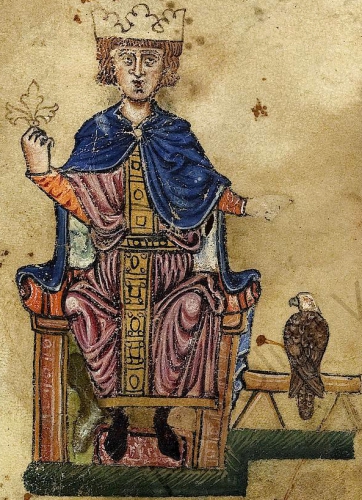 Paradoxalement, enfin, la biographie de ce personnage plus que controversé du Moyen Age est assez détachée des polémiques qui ont ponctué les publications de Sylvain Gouguenheim. En effet l’universitaire avait suscité des clivages particulièrement violents à l’occasion de son Aristote au mont Saint-Michel il y a quelques années. Sur les rapports de Frédéric II au monde arabe, l’auteur semble avancer à pas de loup. Il faut dire qu’il avait fait débat comme l’objet de son livre… Frédéric fut en effet voué aux gémonies par ses contemporains pour avoir obtenu par la négociation et non par le combat la souveraineté sur quelques parcelles des Etats latins perdus quelques années auparavant. Il a en effet obtenu par le traité de Jaffa quelques places, mais rien de bien viable pour maintenir durablement la présence croisée au Levant. Effectivement, les Etats latins ne durèrent pas. Sur les rapports savants, intellectuels qui étaient au cœur de ses précédentes réflexions sur la Renaissance des idées en Occident, l’auteur conclue en s’appuyant sur la faiblesse des sources sur le fait qu’il a pu y avoir influence, mais que celle-ci est difficilement quantifiable. On se reportera au récent ouvrage qui pourra renseigner précisément sur quelques aspects de la Sicile comme plaque tournante des échanges culturels entre Nord et Sud de la Méditerranée (Héritages arabo-islamiques dans l’Europe méditerranéenne), l’auteur se concentrant uniquement sur la ville de Lucera, cas inédit d’une population musulmane concentrée en une ville pouvant demeurer musulmane au cœur même de l’Italie chrétienne.
Paradoxalement, enfin, la biographie de ce personnage plus que controversé du Moyen Age est assez détachée des polémiques qui ont ponctué les publications de Sylvain Gouguenheim. En effet l’universitaire avait suscité des clivages particulièrement violents à l’occasion de son Aristote au mont Saint-Michel il y a quelques années. Sur les rapports de Frédéric II au monde arabe, l’auteur semble avancer à pas de loup. Il faut dire qu’il avait fait débat comme l’objet de son livre… Frédéric fut en effet voué aux gémonies par ses contemporains pour avoir obtenu par la négociation et non par le combat la souveraineté sur quelques parcelles des Etats latins perdus quelques années auparavant. Il a en effet obtenu par le traité de Jaffa quelques places, mais rien de bien viable pour maintenir durablement la présence croisée au Levant. Effectivement, les Etats latins ne durèrent pas. Sur les rapports savants, intellectuels qui étaient au cœur de ses précédentes réflexions sur la Renaissance des idées en Occident, l’auteur conclue en s’appuyant sur la faiblesse des sources sur le fait qu’il a pu y avoir influence, mais que celle-ci est difficilement quantifiable. On se reportera au récent ouvrage qui pourra renseigner précisément sur quelques aspects de la Sicile comme plaque tournante des échanges culturels entre Nord et Sud de la Méditerranée (Héritages arabo-islamiques dans l’Europe méditerranéenne), l’auteur se concentrant uniquement sur la ville de Lucera, cas inédit d’une population musulmane concentrée en une ville pouvant demeurer musulmane au cœur même de l’Italie chrétienne.
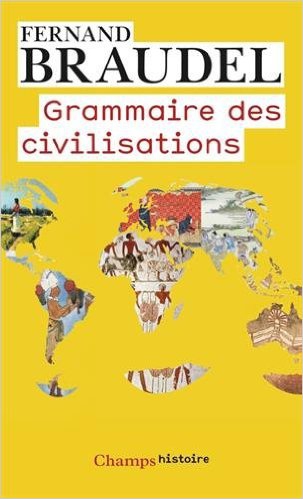 « Atteindre et comprendre notre temps […] à travers l’histoire lente des civilisations » (p. 143) tel est l’objectif central de cet étonnant manuel de classes de terminales publié par les éditions Belin en 1963, intitulé Le monde actuel. Histoire et civilisations, et signé par S. Baille, F. Braudel et R. Philippe. L’ouvrage de Fernand Braudel que nous appelons aujourd’hui Grammaire des civilisations est la partie centrale de ce manuel (des pages 143 à 475). C’est sous ce titre particulièrement fécond – qui reprend le titre générique des chapitres 13 à 15 du manuel de 1963 – que les éditions Arthaud publieront le texte en 1987, deux ans après la mort de Fernand Braudel.
« Atteindre et comprendre notre temps […] à travers l’histoire lente des civilisations » (p. 143) tel est l’objectif central de cet étonnant manuel de classes de terminales publié par les éditions Belin en 1963, intitulé Le monde actuel. Histoire et civilisations, et signé par S. Baille, F. Braudel et R. Philippe. L’ouvrage de Fernand Braudel que nous appelons aujourd’hui Grammaire des civilisations est la partie centrale de ce manuel (des pages 143 à 475). C’est sous ce titre particulièrement fécond – qui reprend le titre générique des chapitres 13 à 15 du manuel de 1963 – que les éditions Arthaud publieront le texte en 1987, deux ans après la mort de Fernand Braudel. En juin 1959, lorsque le programme définitif officiel est publié, Braudel a dû mettre de l’eau dans son vin, mais l’essentiel est passé : le premier trimestre de la classe de terminale est certes consacré à « la naissance du monde contemporain (de 1914 à nos jours) », mais les deuxième et troisième trimestres vont permettre d’étudier « les civilisations du monde contemporain » et se terminent par une étude des « grands problèmes mondiaux du moment ». Cette refonte complète de l’année de terminale serait encore révolutionnaire aujourd’hui. On imagine facilement ce que ce nouveau programme a été au début des années 60. Maurice Aymard (voir « À lire ») se rappelle qu’« évacuer l’événement de l’enseignement de l’histoire, ou du moins le reléguer au second plan, même pour une seule année : la réforme était trop brutale pour être acceptée telle quelle, et les résistances ne tardèrent pas […]. “Les faits” d’un côté, “le bavardage” ou “l’abstraction” de l’autre. Les auteurs des nouveaux manuels […] n’hésitent pas à confesser leur perplexité, sinon leur méfiance ». D’où l’importance du manuel publié par les éditions Belin… où l’on attend Fernand Braudel au tournant.
En juin 1959, lorsque le programme définitif officiel est publié, Braudel a dû mettre de l’eau dans son vin, mais l’essentiel est passé : le premier trimestre de la classe de terminale est certes consacré à « la naissance du monde contemporain (de 1914 à nos jours) », mais les deuxième et troisième trimestres vont permettre d’étudier « les civilisations du monde contemporain » et se terminent par une étude des « grands problèmes mondiaux du moment ». Cette refonte complète de l’année de terminale serait encore révolutionnaire aujourd’hui. On imagine facilement ce que ce nouveau programme a été au début des années 60. Maurice Aymard (voir « À lire ») se rappelle qu’« évacuer l’événement de l’enseignement de l’histoire, ou du moins le reléguer au second plan, même pour une seule année : la réforme était trop brutale pour être acceptée telle quelle, et les résistances ne tardèrent pas […]. “Les faits” d’un côté, “le bavardage” ou “l’abstraction” de l’autre. Les auteurs des nouveaux manuels […] n’hésitent pas à confesser leur perplexité, sinon leur méfiance ». D’où l’importance du manuel publié par les éditions Belin… où l’on attend Fernand Braudel au tournant. Mais il ne s’arrête pas là. Si les civilisations sont des structures spatiales, sociales, économiques et mentales, elles sont également autre chose : « les civilisations sont des continuités » en ce sens où « parmi les coordonnées anciennes (certaines) restent valables aujourd’hui encore » (p. 161). C’est là que Fernand Braudel place le rôle central de l’histoire à la fois comme science mais aussi comme ré-interprétation et re-construction permanente par les sociétés présentes de leur propre passé : « tout ce par quoi passé et présent se court-circuitent souvent à des siècles et des siècles de distance » (p. 161). Alain Brunhes a raison d’insister sur l’importance de ce court-circuit dans le raisonnement braudélien (voir « À lire »). C’est bien lui qui permet de donner du sens à l’ensemble de l’édifice : « une civilisation, ce n’est donc ni une économie donnée, ni une société donnée, mais ce qui, à travers des séries d’économies, des séries de sociétés, persistent à vivre en ne se laissant qu’à peine et peu à peu infléchir […]. La multiplicité évidente des explications de l’histoire, leur écartèlement entre des points de vue différents, leurs contradictions mêmes s’accordent, en fait, dans une dialectique particulière à l’histoire, fondée sur la diversité des temps historiques eux-mêmes : temps rapide des événements, temps allongé des épisodes, temps ralenti et paresseux des civilisations » (p. 167 et p. 5).
Mais il ne s’arrête pas là. Si les civilisations sont des structures spatiales, sociales, économiques et mentales, elles sont également autre chose : « les civilisations sont des continuités » en ce sens où « parmi les coordonnées anciennes (certaines) restent valables aujourd’hui encore » (p. 161). C’est là que Fernand Braudel place le rôle central de l’histoire à la fois comme science mais aussi comme ré-interprétation et re-construction permanente par les sociétés présentes de leur propre passé : « tout ce par quoi passé et présent se court-circuitent souvent à des siècles et des siècles de distance » (p. 161). Alain Brunhes a raison d’insister sur l’importance de ce court-circuit dans le raisonnement braudélien (voir « À lire »). C’est bien lui qui permet de donner du sens à l’ensemble de l’édifice : « une civilisation, ce n’est donc ni une économie donnée, ni une société donnée, mais ce qui, à travers des séries d’économies, des séries de sociétés, persistent à vivre en ne se laissant qu’à peine et peu à peu infléchir […]. La multiplicité évidente des explications de l’histoire, leur écartèlement entre des points de vue différents, leurs contradictions mêmes s’accordent, en fait, dans une dialectique particulière à l’histoire, fondée sur la diversité des temps historiques eux-mêmes : temps rapide des événements, temps allongé des épisodes, temps ralenti et paresseux des civilisations » (p. 167 et p. 5).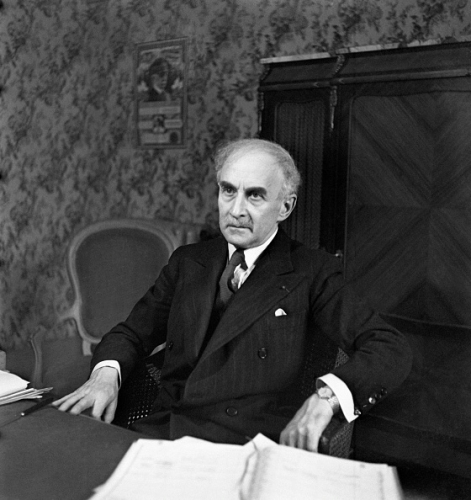
 La France selon Abel Bonnard est une entité organique, y compris même (en fait : surtout) lorsqu'elle est démembrée : «La France ne se sera rendue vraiment apte à se donner une meilleure organisation que lorsqu'elle regardera le régime dont elle se plaint comme l'expression obscène des défauts qu'elle a accepté de garder sourdement en elle, et comme la place visible où s'avoue un mal profond» (1).
La France selon Abel Bonnard est une entité organique, y compris même (en fait : surtout) lorsqu'elle est démembrée : «La France ne se sera rendue vraiment apte à se donner une meilleure organisation que lorsqu'elle regardera le régime dont elle se plaint comme l'expression obscène des défauts qu'elle a accepté de garder sourdement en elle, et comme la place visible où s'avoue un mal profond» (1). C'est la continuité de «la civilisation humaine» (p. 40) que la Révolution a brisée, alors que la royauté se faisait un devoir de la respecter : «Tels étaient les sentiments auxquels un Roi de France eût été obligé par sa fonction, alors même qu'il n'y aurait pas été porté par son caractère, dans une organisation où le pouvoir politique, bien loin de prétendre fixer lui-même les valeurs morales, se piquait au contraire d'honorer plus que personne celles qu'il n'avait pas établies» (pp. 38-9). Et Abel Bonnard d'illustrer par un long passage la vertu de l'Ancien Régime, chaîne ininterrompue de mérites, de bassesses et de médiocrités sans doute, mais surtout d'une vision verticale, capable de transcender les petites misères si bassement politiques qui forment la glu pourrie de notre époque : «Quand Harel, bonapartiste déclaré et qui, comme tel, avait âprement combattu la Restauration, brigua en 1829 la direction de l'Odéon, théâtre royal, on ne trouva pas de meilleur moyen de le recommander à Charles X que de faire valoir le dévouement qu'il avait montré pour l'Empereur tombé et Harel, en effet, eut son privilège. Quand Hyde de Neuville, en 1829, ministre du même roi, désire le faire revenir d'un choix qu'il a déjà fait, pour nommer à une place vacante l'officier de marine Bisson, il raconte au souverain la résolution et le courage que Bisson a montrés à Rochefort, en 1815, en offrant à Napoléon de lui faire percer la croisière anglaise, et cela décide Charles X. Tels étaient les sentiments, conclut Abel Bonnard, auxquels un Roi de France eût été obligé par sa fonction, alors même qu'il n'y aurait pas été porté par son caractère, dans une organisation où le pouvoir politique, bien loin de prétendre fixer lui-même les valeurs morales, se piquait au contraire d'honorer plus que personne celles qu'il n'avait pas établies» (pp. 38-9).
C'est la continuité de «la civilisation humaine» (p. 40) que la Révolution a brisée, alors que la royauté se faisait un devoir de la respecter : «Tels étaient les sentiments auxquels un Roi de France eût été obligé par sa fonction, alors même qu'il n'y aurait pas été porté par son caractère, dans une organisation où le pouvoir politique, bien loin de prétendre fixer lui-même les valeurs morales, se piquait au contraire d'honorer plus que personne celles qu'il n'avait pas établies» (pp. 38-9). Et Abel Bonnard d'illustrer par un long passage la vertu de l'Ancien Régime, chaîne ininterrompue de mérites, de bassesses et de médiocrités sans doute, mais surtout d'une vision verticale, capable de transcender les petites misères si bassement politiques qui forment la glu pourrie de notre époque : «Quand Harel, bonapartiste déclaré et qui, comme tel, avait âprement combattu la Restauration, brigua en 1829 la direction de l'Odéon, théâtre royal, on ne trouva pas de meilleur moyen de le recommander à Charles X que de faire valoir le dévouement qu'il avait montré pour l'Empereur tombé et Harel, en effet, eut son privilège. Quand Hyde de Neuville, en 1829, ministre du même roi, désire le faire revenir d'un choix qu'il a déjà fait, pour nommer à une place vacante l'officier de marine Bisson, il raconte au souverain la résolution et le courage que Bisson a montrés à Rochefort, en 1815, en offrant à Napoléon de lui faire percer la croisière anglaise, et cela décide Charles X. Tels étaient les sentiments, conclut Abel Bonnard, auxquels un Roi de France eût été obligé par sa fonction, alors même qu'il n'y aurait pas été porté par son caractère, dans une organisation où le pouvoir politique, bien loin de prétendre fixer lui-même les valeurs morales, se piquait au contraire d'honorer plus que personne celles qu'il n'avait pas établies» (pp. 38-9).  Toutefois, le salut réside peut-être, nous dit Bonnard, dans la présence, au sein d'une société devenue tout entière modérée, c'est-à-dire composée d'individus (belle défini comme étant «l'homme réduit par l'exigence de la vanité à l'indigence du Moi, aussi séparé de la modestie que de la grandeur», p. 248), de quelques réactionnaires, puisque certaines «âmes sont comme ces grains de blé toujours féconds que les archéologues trouvent dans les tombes de l'Égypte antique : elles se conservent dans le passé pour être semées dans l'avenir» (p. 122).
Toutefois, le salut réside peut-être, nous dit Bonnard, dans la présence, au sein d'une société devenue tout entière modérée, c'est-à-dire composée d'individus (belle défini comme étant «l'homme réduit par l'exigence de la vanité à l'indigence du Moi, aussi séparé de la modestie que de la grandeur», p. 248), de quelques réactionnaires, puisque certaines «âmes sont comme ces grains de blé toujours féconds que les archéologues trouvent dans les tombes de l'Égypte antique : elles se conservent dans le passé pour être semées dans l'avenir» (p. 122).  Toutefois, la Révolution, selon l'auteur, «est par essence incapable de procurer à ses partisans ni les plus hautes, ni les plus profondes des joies qu'on trouve dans l'amour de l'ordre, mais on s'expliquerait mal sa puissance, si l'on n'avait pas compris que, dans le monde décomposé d'aujourd'hui, elle dispense à ceux qu'elle asservit le rudiment informe et honteux des jouissances que l'ordre assure à ceux qui le servent. Les révolutionnaires appartiennent encore au désordre par la volupté de détruire, mais ils rentrent malgré eux dans l'ordre par le bonheur d'obéir» (pp. 177-8). Ainsi, les «révolutions sont les temps de l'humiliation de l'homme et les moments les plus matériels de l'histoire. Elles marquent moins la revanche des malheureux que celle des inférieurs. Ce sont des drames énormes dont les acteurs sont très petits» (p. 181), ce constat étant suivi de quelques portraits sans la moindre complaisance des révolutionnaires français les plus connus.
Toutefois, la Révolution, selon l'auteur, «est par essence incapable de procurer à ses partisans ni les plus hautes, ni les plus profondes des joies qu'on trouve dans l'amour de l'ordre, mais on s'expliquerait mal sa puissance, si l'on n'avait pas compris que, dans le monde décomposé d'aujourd'hui, elle dispense à ceux qu'elle asservit le rudiment informe et honteux des jouissances que l'ordre assure à ceux qui le servent. Les révolutionnaires appartiennent encore au désordre par la volupté de détruire, mais ils rentrent malgré eux dans l'ordre par le bonheur d'obéir» (pp. 177-8). Ainsi, les «révolutions sont les temps de l'humiliation de l'homme et les moments les plus matériels de l'histoire. Elles marquent moins la revanche des malheureux que celle des inférieurs. Ce sont des drames énormes dont les acteurs sont très petits» (p. 181), ce constat étant suivi de quelques portraits sans la moindre complaisance des révolutionnaires français les plus connus. Nous en sommes là, et force est d'admettre que la situation présente, dans ses grandes lignes du moins, n'a pas beaucoup changé, a même, sans doute, empiré, depuis l'époque où Abel Bonnard a écrit son pamphlet aussi juste et beau qu'implacable, droite et gauche confondues dans une même critique dont la hauteur et la puissance impressionnent : «Les circonstances où nous sommes auront paru vainement, si elles ne donnent pas lieu à une rentrée de l'homme. Les crises ne font jamais que nous sommer d'être nous-mêmes; les choses aboient autour de nous pour provoquer quelqu'un qui les dompte, et cette même clameur qui donne aux âmes lâches l'envie de s'enfuir donne aux âmes fortes celle de se montrer» (p. 290, je souligne).
Nous en sommes là, et force est d'admettre que la situation présente, dans ses grandes lignes du moins, n'a pas beaucoup changé, a même, sans doute, empiré, depuis l'époque où Abel Bonnard a écrit son pamphlet aussi juste et beau qu'implacable, droite et gauche confondues dans une même critique dont la hauteur et la puissance impressionnent : «Les circonstances où nous sommes auront paru vainement, si elles ne donnent pas lieu à une rentrée de l'homme. Les crises ne font jamais que nous sommer d'être nous-mêmes; les choses aboient autour de nous pour provoquer quelqu'un qui les dompte, et cette même clameur qui donne aux âmes lâches l'envie de s'enfuir donne aux âmes fortes celle de se montrer» (p. 290, je souligne).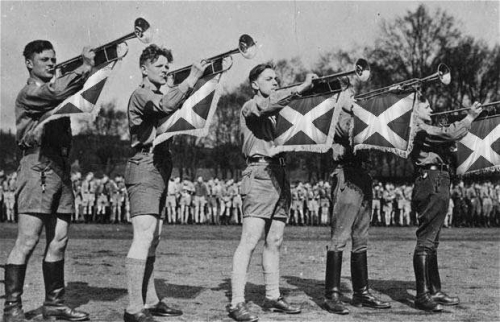
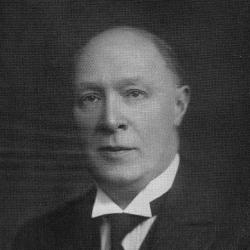 The first Scottish nationalist to contest a Westminster parliamentary seat in Scotland was the journalist, poet and folklorist
The first Scottish nationalist to contest a Westminster parliamentary seat in Scotland was the journalist, poet and folklorist  An idea of what animated Lewis Spence's political thought can be extracted from his 1905 book The Mysteries of Britain: Secret Rites and Traditions of Ancient Britain (reprinted in 1994 by Senate). The book is dripping with erudition and politically incorrect racial and ethnic analysis relating to the origins of the pre-Christian native religion of the ancient British Isles and the indigenous people of those islands who practised it. Spence concludes: "In no individual born in these islands does there not flow the blood of the Druid priests and seers, and I confidently rely on British mystics, whatever their particular predilections, to unite in this greatest of all possible quests, the restoration of our native Secret Tradition," arguing that "we Britons are much too prone to look for excellence outside of the boundaries of our own island" and "that we should so weakly rely on alien systems of thought while it is possible for us to re-establish our own is surely miserable."
An idea of what animated Lewis Spence's political thought can be extracted from his 1905 book The Mysteries of Britain: Secret Rites and Traditions of Ancient Britain (reprinted in 1994 by Senate). The book is dripping with erudition and politically incorrect racial and ethnic analysis relating to the origins of the pre-Christian native religion of the ancient British Isles and the indigenous people of those islands who practised it. Spence concludes: "In no individual born in these islands does there not flow the blood of the Druid priests and seers, and I confidently rely on British mystics, whatever their particular predilections, to unite in this greatest of all possible quests, the restoration of our native Secret Tradition," arguing that "we Britons are much too prone to look for excellence outside of the boundaries of our own island" and "that we should so weakly rely on alien systems of thought while it is possible for us to re-establish our own is surely miserable." 
 Another significant pre-war figure in politically incorrect Scottish nationalism was the celebrated Scottish poet,
Another significant pre-war figure in politically incorrect Scottish nationalism was the celebrated Scottish poet, 


 Qu'est-ce que l'autre tiers-mondisme ? Un tiers-mondisme différent de celui que l'on connaît, c'est à dire « classique, progressiste, qu'il soit chrétien, humanitaire et pacifiste, communiste orthodoxe, trotskiste ou encore d'ultragauche » ? Effectivement. L'autre tiers-mondisme est l'expression par laquelle Philippe Baillet désigne tous ceux que l'on pourrait considérer comme tenants d'un « tiers-mondisme de droite » ou plutôt d'extrême-droite (même quand ceux-ci viennent ou sont d'extrême-gauche, à l'image d'un Soral).
Qu'est-ce que l'autre tiers-mondisme ? Un tiers-mondisme différent de celui que l'on connaît, c'est à dire « classique, progressiste, qu'il soit chrétien, humanitaire et pacifiste, communiste orthodoxe, trotskiste ou encore d'ultragauche » ? Effectivement. L'autre tiers-mondisme est l'expression par laquelle Philippe Baillet désigne tous ceux que l'on pourrait considérer comme tenants d'un « tiers-mondisme de droite » ou plutôt d'extrême-droite (même quand ceux-ci viennent ou sont d'extrême-gauche, à l'image d'un Soral). Rosenberg, quant à lui, « pressent(ait) qu'un jour le flot montant des peuples de couleur pourrait trouver une direction nette et une forme d'unité grâce à l'islam ». La citation suivant, relevée une fois encore par l'auteur, provient du Mythe du Xxe siècle:
Rosenberg, quant à lui, « pressent(ait) qu'un jour le flot montant des peuples de couleur pourrait trouver une direction nette et une forme d'unité grâce à l'islam ». La citation suivant, relevée une fois encore par l'auteur, provient du Mythe du Xxe siècle: Ces dernières années, bien des positions islamophiles liées à tort ou à raison à la droite radicale sont devenues monnaie courante dans ce que Philippe Baillet appelle le « philo-islamisme radical ». Celui-ci est généralement lié à un « sous-marxisme rustique typiquement tiers-mondiste » ou est « emprunt de complotisme à la faveur du développement exponentiel de la « foire aux Illuminés » ». Bien différent du « fascisme comme phénomène européen », ses traits principaux sont : une indifférence plus ou moins marquée envers la « défense de la race blanche », une « véritable passion antijuive » et anti-américaine, une grande hostilité à la finance et au capitalisme, une sympathie pour toutes les causes « anti-impérialistes » et pour l'islam comme religion ou civilisation (l'Islam dans ce cas). Que nous partagions certaines idées de ce courant ne nous en rend pas forcément proche, et je rejoins en cela l'auteur. Celui-ci souligne la diversion effectuée par cette sensibilité chez un grand nombre de personnes qui oublient par ce biais «la priorité absolue» en ce « moment capital de l'histoire de la civilisation européenne »: la perpétuation des peuples européens (de leur partie saine tout du moins). De Roger Garaudy, « illuminé christo-islamo-marxiste » à Carlos et son internationalisme en passant par le chantre de la réconciliation Alain Soral qui « s'inscrit parfaitement (…) dans la vieille tradition des chefaillons et Führer d'opérette chers à la droite radicale française », nombre de figures chères à la frange la plus islamophile de nos mouvances sont ici égratignées par Baillet qui n'a pas son pareil pour souligner leurs contradictions (quand Soral se prétend "national-socialiste français" par exemple)... ou rappeler à notre bon souvenir certaines énormités ou actes pas reluisants. Il souligne ainsi les tentatives d' « islamisation » de la « mouvance nationale » en prenant le cas d'une association telle que celle des « Fils de France » qui se veut un « rassemblement de musulmans français patriotes » et qui a reçu, entre autre, le soutien d'Alain de Benoist. Le philo-islamisme de ce dernier se manifeste depuis bien longtemps. Baillet rapporte d'ailleurs plusieurs citations de celui qu'il qualifie de « toutologue » à ce sujet! Plus ou moins récentes, elles permettent de mieux comprendre le personnage (voir plus haut)... Autant dire qu'on ne peut qu'aller dans le sens de Baillet lorsqu'il argue de l'étendue et de la diversité du « parti islamophile » en France. « Ce n'est pas du tout rassurant », en effet ! Le « parti islamophile » est bien enraciné et doit être combattu « sans faiblesse » partout où il se trouve. Un peu d'espoir cependant :
Ces dernières années, bien des positions islamophiles liées à tort ou à raison à la droite radicale sont devenues monnaie courante dans ce que Philippe Baillet appelle le « philo-islamisme radical ». Celui-ci est généralement lié à un « sous-marxisme rustique typiquement tiers-mondiste » ou est « emprunt de complotisme à la faveur du développement exponentiel de la « foire aux Illuminés » ». Bien différent du « fascisme comme phénomène européen », ses traits principaux sont : une indifférence plus ou moins marquée envers la « défense de la race blanche », une « véritable passion antijuive » et anti-américaine, une grande hostilité à la finance et au capitalisme, une sympathie pour toutes les causes « anti-impérialistes » et pour l'islam comme religion ou civilisation (l'Islam dans ce cas). Que nous partagions certaines idées de ce courant ne nous en rend pas forcément proche, et je rejoins en cela l'auteur. Celui-ci souligne la diversion effectuée par cette sensibilité chez un grand nombre de personnes qui oublient par ce biais «la priorité absolue» en ce « moment capital de l'histoire de la civilisation européenne »: la perpétuation des peuples européens (de leur partie saine tout du moins). De Roger Garaudy, « illuminé christo-islamo-marxiste » à Carlos et son internationalisme en passant par le chantre de la réconciliation Alain Soral qui « s'inscrit parfaitement (…) dans la vieille tradition des chefaillons et Führer d'opérette chers à la droite radicale française », nombre de figures chères à la frange la plus islamophile de nos mouvances sont ici égratignées par Baillet qui n'a pas son pareil pour souligner leurs contradictions (quand Soral se prétend "national-socialiste français" par exemple)... ou rappeler à notre bon souvenir certaines énormités ou actes pas reluisants. Il souligne ainsi les tentatives d' « islamisation » de la « mouvance nationale » en prenant le cas d'une association telle que celle des « Fils de France » qui se veut un « rassemblement de musulmans français patriotes » et qui a reçu, entre autre, le soutien d'Alain de Benoist. Le philo-islamisme de ce dernier se manifeste depuis bien longtemps. Baillet rapporte d'ailleurs plusieurs citations de celui qu'il qualifie de « toutologue » à ce sujet! Plus ou moins récentes, elles permettent de mieux comprendre le personnage (voir plus haut)... Autant dire qu'on ne peut qu'aller dans le sens de Baillet lorsqu'il argue de l'étendue et de la diversité du « parti islamophile » en France. « Ce n'est pas du tout rassurant », en effet ! Le « parti islamophile » est bien enraciné et doit être combattu « sans faiblesse » partout où il se trouve. Un peu d'espoir cependant :
 Had Zehrer de Machtergreifung van Hitler kunnen verhinderen? Misschien niet met de pen, maar wel met de wapens van een regerende generaal?
Had Zehrer de Machtergreifung van Hitler kunnen verhinderen? Misschien niet met de pen, maar wel met de wapens van een regerende generaal?
 'Die Tat' mocht dan wel met haar strijd tegen Weimar, tegen Versailles, tegen het parlementarisme en voor een elitair bestuurde natiestaat en een 'Duits socialisme' geestelijk mee het pad hebben geëffend voor de machtsovername door de nationaalsocialisten, dezen vergaten nooit wie tijdens de tocht naar de top aan hun kant had gestaan en wie niet. Enkele weken na de Machtergreifung werd Zehrer gedwongen de leiding over 'Die Tat' af te staan. Hij trok zich in de komende jaren terug op het eiland Sylt, ver weg van Berlijn, uit het vizier van de nationaalsocialisten. Zijn joodse echtgenote emigreerde in 1938 naar Groot-Brittannië. Zehrer werkte in de beginjaren van de oorlog nog als zaakvoerder van de uitgeverij Stalling en diende van 1943 tot 1945 bij de staf van de Luftwaffe. Na de oorlog werd Zehrer hoofdredacteur van 'Die Welt', de krant die door de Britse bezettingsmacht in Hamburg was opgericht. Duitse sociaaldemocraten protesteerden hiertegen omdat ze de strijd van Zehrer tegen de Weimarrepubliek niet waren vergeten. Zehrer moest opstappen en schreef tot 1953 voor andere dagbladen. Toen de bekende uitgever Axel Springer, een goede vriend, in 1953 'Die Welt' kocht, kon Zehrer weer aan de slag, en wel als hoofdredacteur bij deze krant, die nog altijd een van de vlaggenschepen van de Bondsrepubliek is.[iv]
'Die Tat' mocht dan wel met haar strijd tegen Weimar, tegen Versailles, tegen het parlementarisme en voor een elitair bestuurde natiestaat en een 'Duits socialisme' geestelijk mee het pad hebben geëffend voor de machtsovername door de nationaalsocialisten, dezen vergaten nooit wie tijdens de tocht naar de top aan hun kant had gestaan en wie niet. Enkele weken na de Machtergreifung werd Zehrer gedwongen de leiding over 'Die Tat' af te staan. Hij trok zich in de komende jaren terug op het eiland Sylt, ver weg van Berlijn, uit het vizier van de nationaalsocialisten. Zijn joodse echtgenote emigreerde in 1938 naar Groot-Brittannië. Zehrer werkte in de beginjaren van de oorlog nog als zaakvoerder van de uitgeverij Stalling en diende van 1943 tot 1945 bij de staf van de Luftwaffe. Na de oorlog werd Zehrer hoofdredacteur van 'Die Welt', de krant die door de Britse bezettingsmacht in Hamburg was opgericht. Duitse sociaaldemocraten protesteerden hiertegen omdat ze de strijd van Zehrer tegen de Weimarrepubliek niet waren vergeten. Zehrer moest opstappen en schreef tot 1953 voor andere dagbladen. Toen de bekende uitgever Axel Springer, een goede vriend, in 1953 'Die Welt' kocht, kon Zehrer weer aan de slag, en wel als hoofdredacteur bij deze krant, die nog altijd een van de vlaggenschepen van de Bondsrepubliek is.[iv]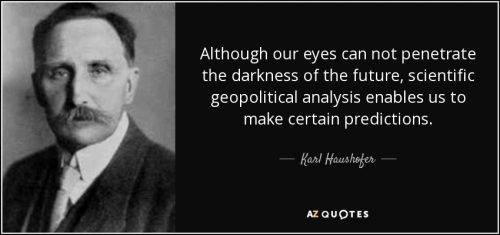
 Alla ripresa dell’insegnamento la gioventù tedesca del dopoguerra sembrava priva soprattutto della capacità di visioni grandiose (di dimensioni continentali!) e della conoscenza delle condizioni di vita di altri popoli, in particolare di quelli oceanici. Tagliata fuori dal vivificante respiro del mare e privata dei suoi rapporti ultramarini, era portatrice di una visione del mondo di ristrettezza continentale, era divenuta meschina e si perdeva in una quantità di tensioni di poco conto, come dimostrava anche la frammentazione in 36 partiti e in numerose leghe. La sua conoscenza di ampie realtà condizionate dal mare, come quelle dell’impero britannico, degli Stati Uniti d’America, del Giappone e dell’Impero olandese delle Indie Orientali, era ancora più esigua di quella che aveva del Medio e Vicino Oriente, dell’Eurasia e dell’Unione Sovietica.
Alla ripresa dell’insegnamento la gioventù tedesca del dopoguerra sembrava priva soprattutto della capacità di visioni grandiose (di dimensioni continentali!) e della conoscenza delle condizioni di vita di altri popoli, in particolare di quelli oceanici. Tagliata fuori dal vivificante respiro del mare e privata dei suoi rapporti ultramarini, era portatrice di una visione del mondo di ristrettezza continentale, era divenuta meschina e si perdeva in una quantità di tensioni di poco conto, come dimostrava anche la frammentazione in 36 partiti e in numerose leghe. La sua conoscenza di ampie realtà condizionate dal mare, come quelle dell’impero britannico, degli Stati Uniti d’America, del Giappone e dell’Impero olandese delle Indie Orientali, era ancora più esigua di quella che aveva del Medio e Vicino Oriente, dell’Eurasia e dell’Unione Sovietica.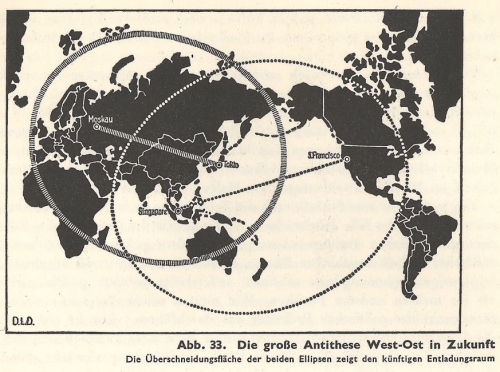
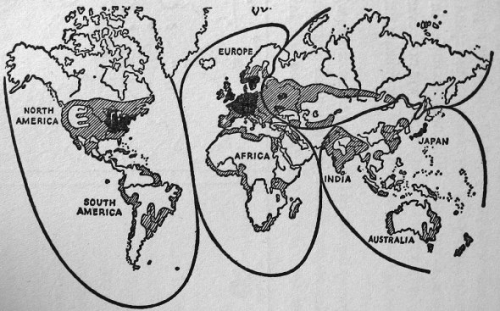
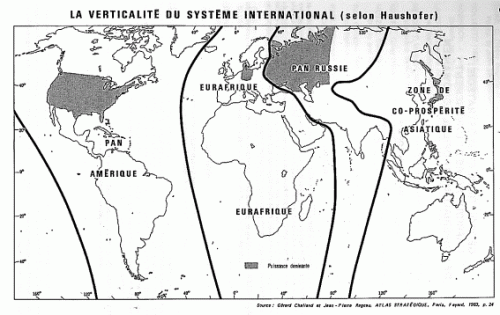


 Since 2003, Assyrians have been the targeted victims of the whole spectrum of atrocity. More than seventy churches across Iraq have been attacked or destroyed. Entire neighborhoods have been emptied of their residents following episodes of rape, murder, and intimidation deliberately fashioned to purge Iraq of Christianity. A pre-2003 population of around 1.2 million mainly ethnically Assyrian Christians in Iraq has dropped to four hundred thousand.
Since 2003, Assyrians have been the targeted victims of the whole spectrum of atrocity. More than seventy churches across Iraq have been attacked or destroyed. Entire neighborhoods have been emptied of their residents following episodes of rape, murder, and intimidation deliberately fashioned to purge Iraq of Christianity. A pre-2003 population of around 1.2 million mainly ethnically Assyrian Christians in Iraq has dropped to four hundred thousand.
